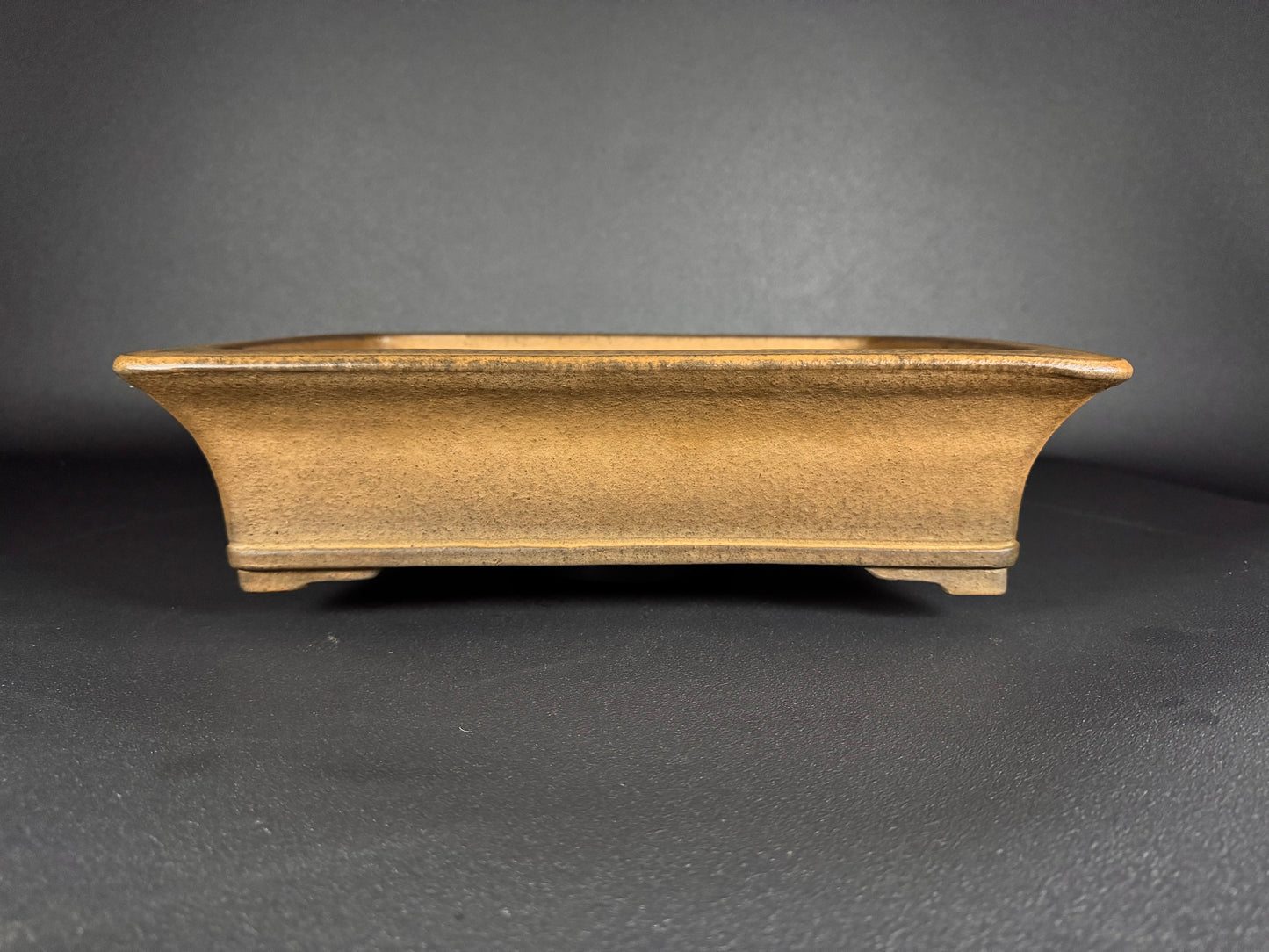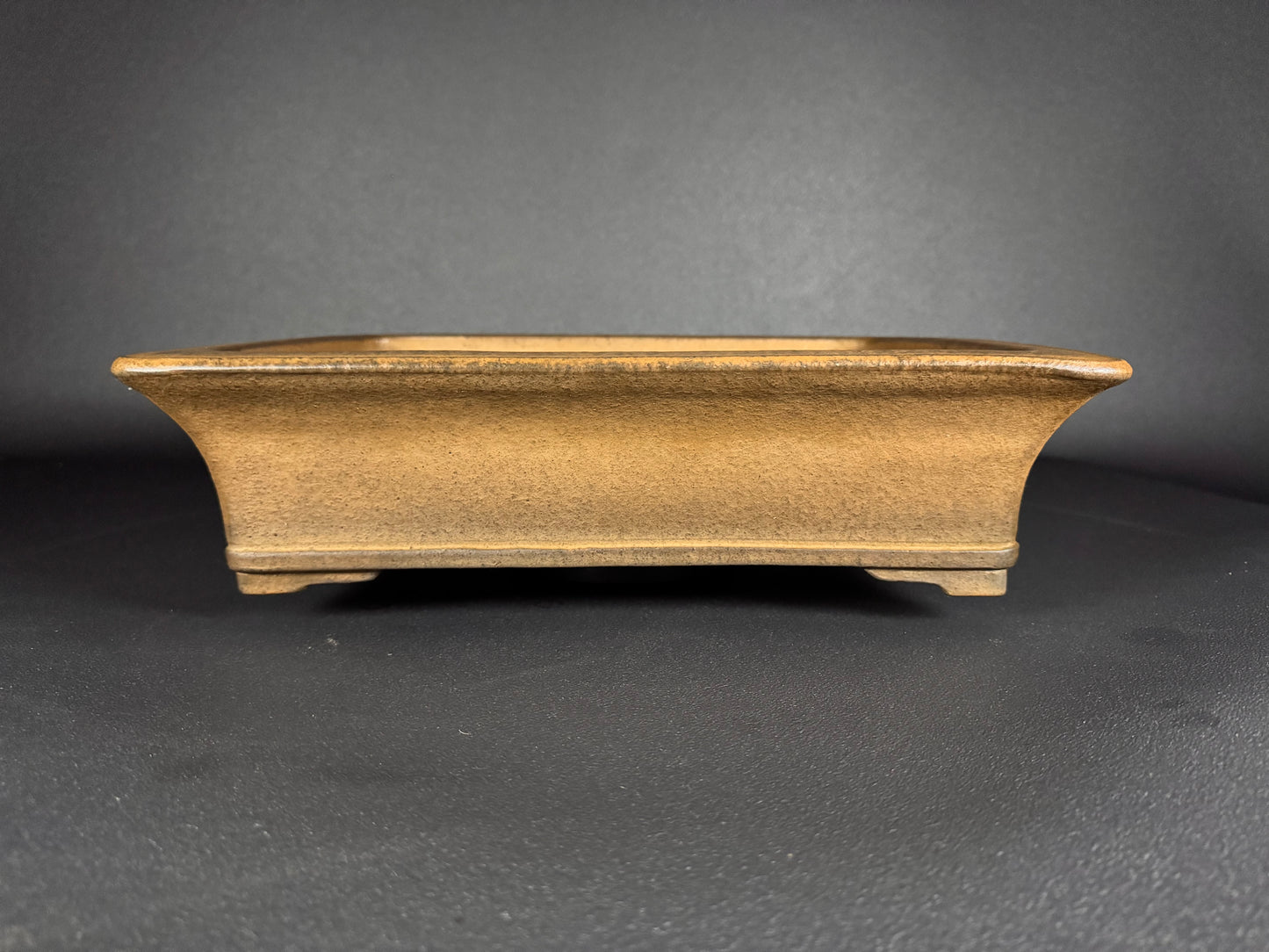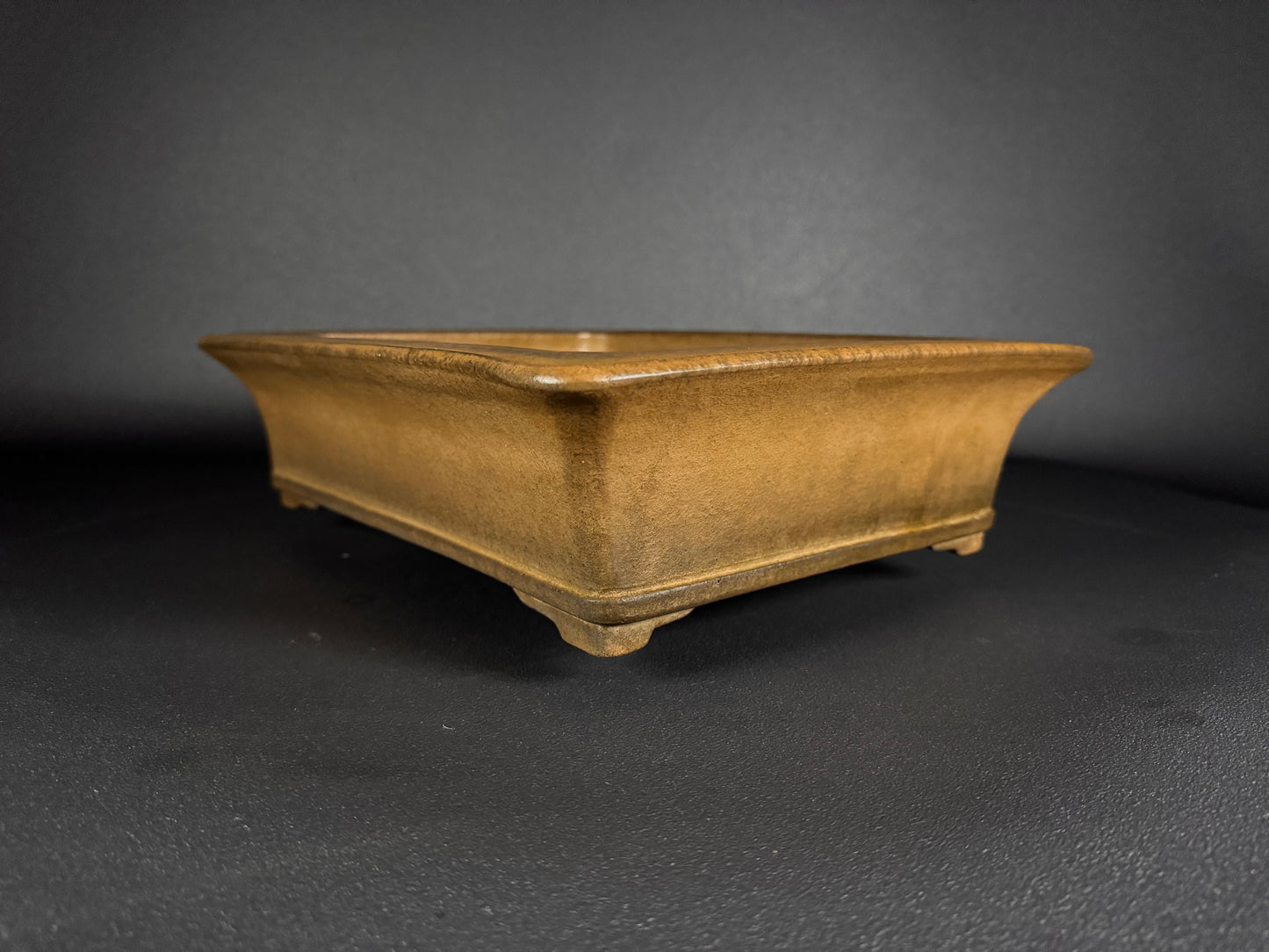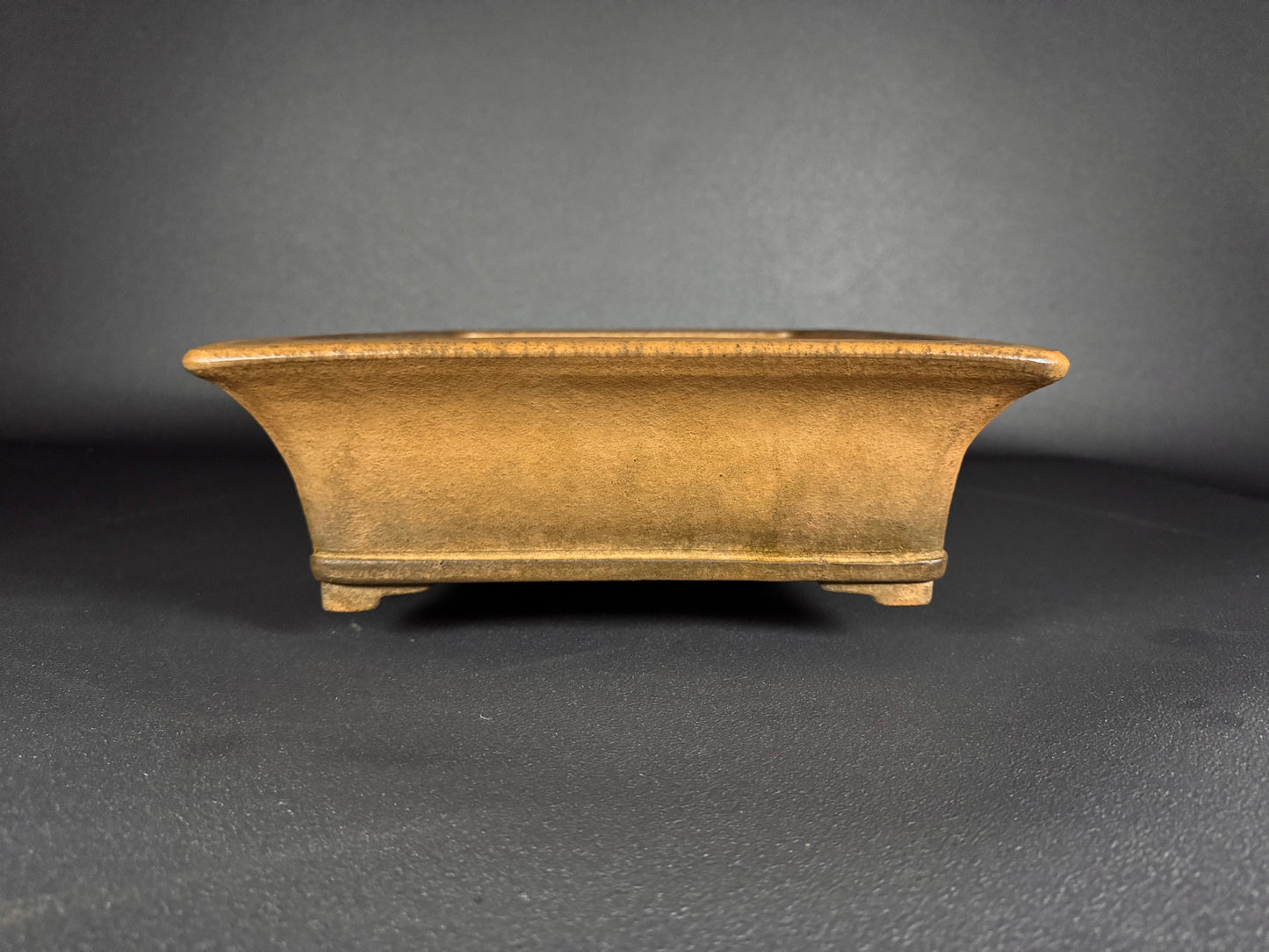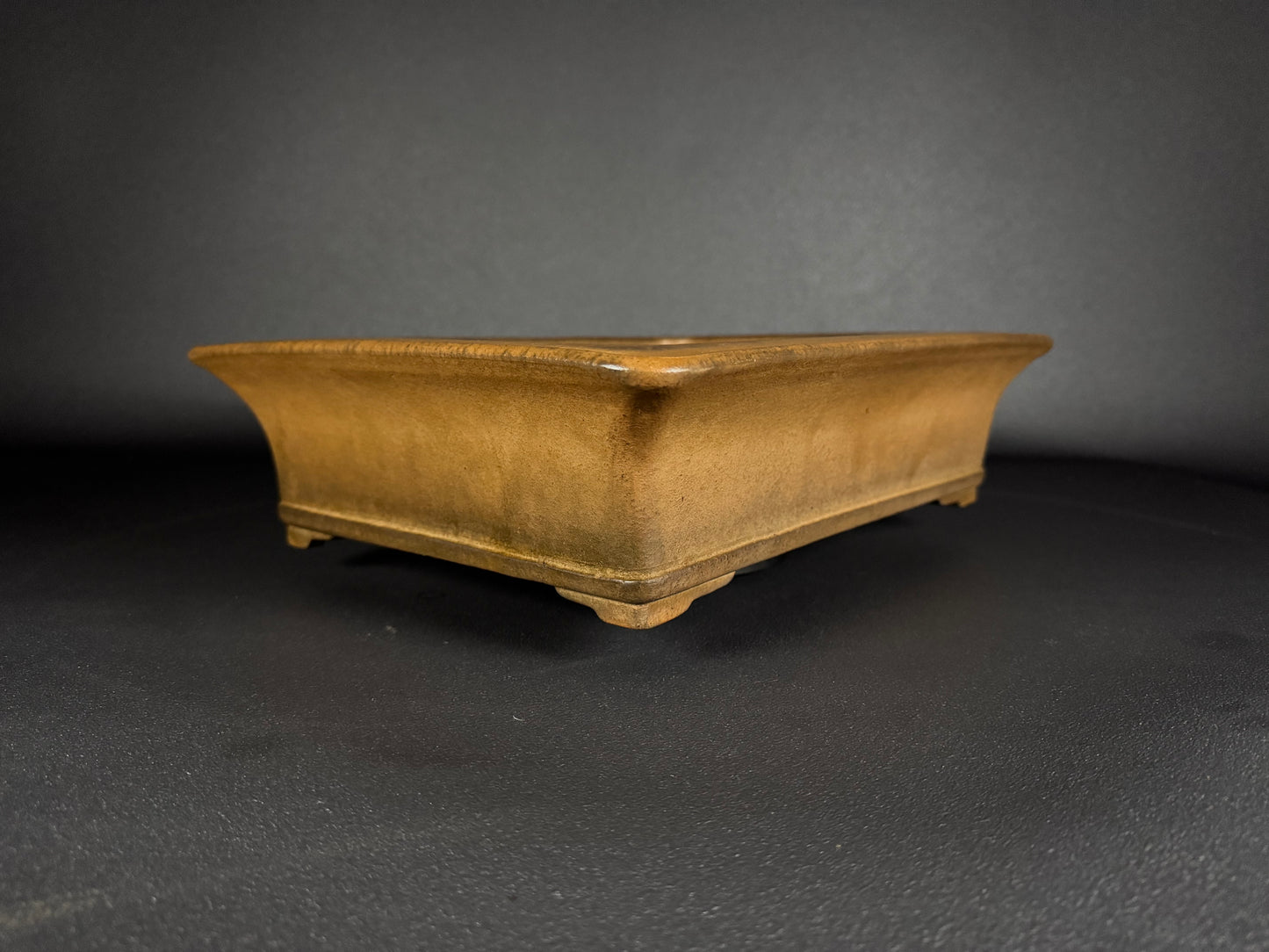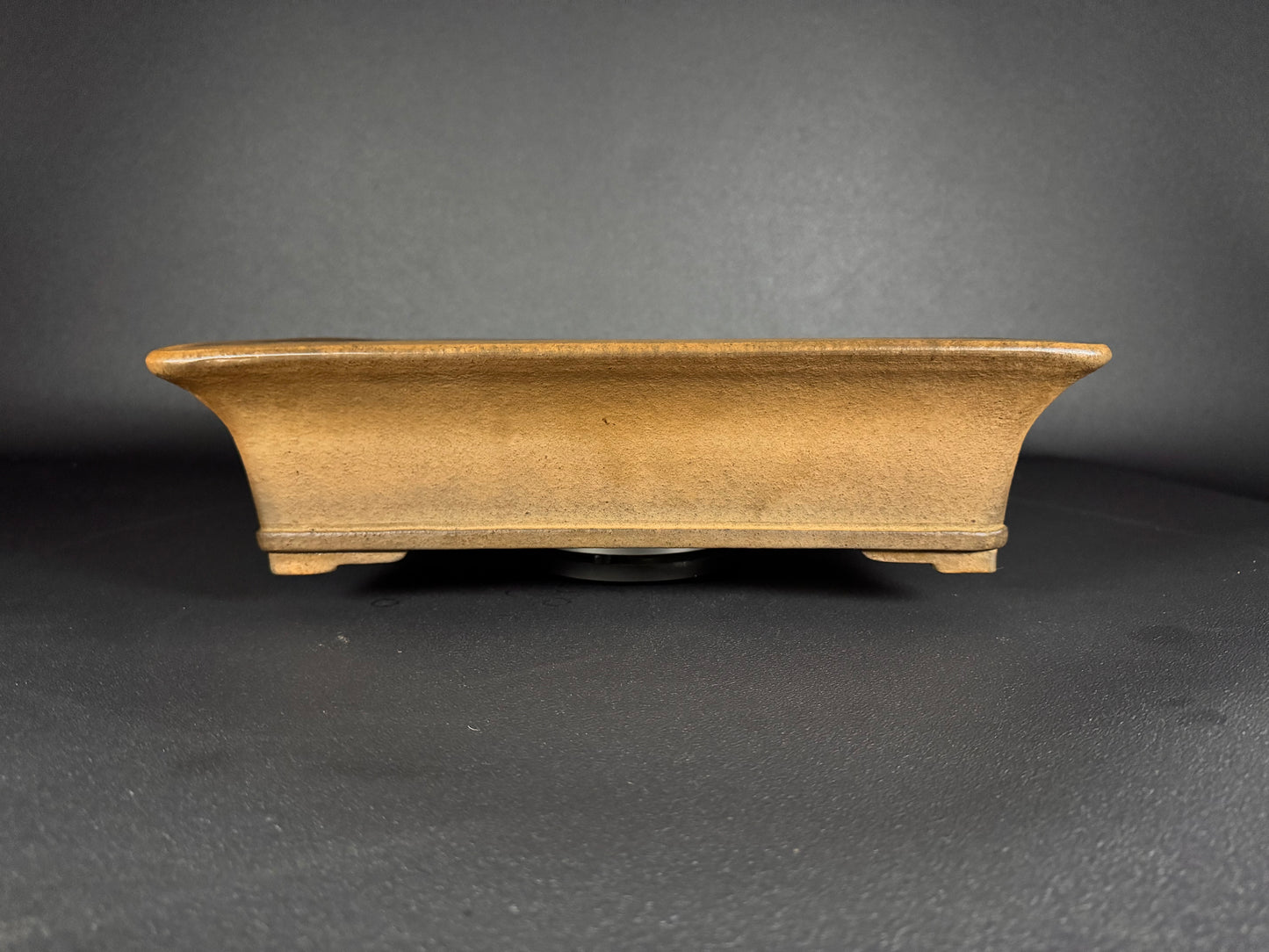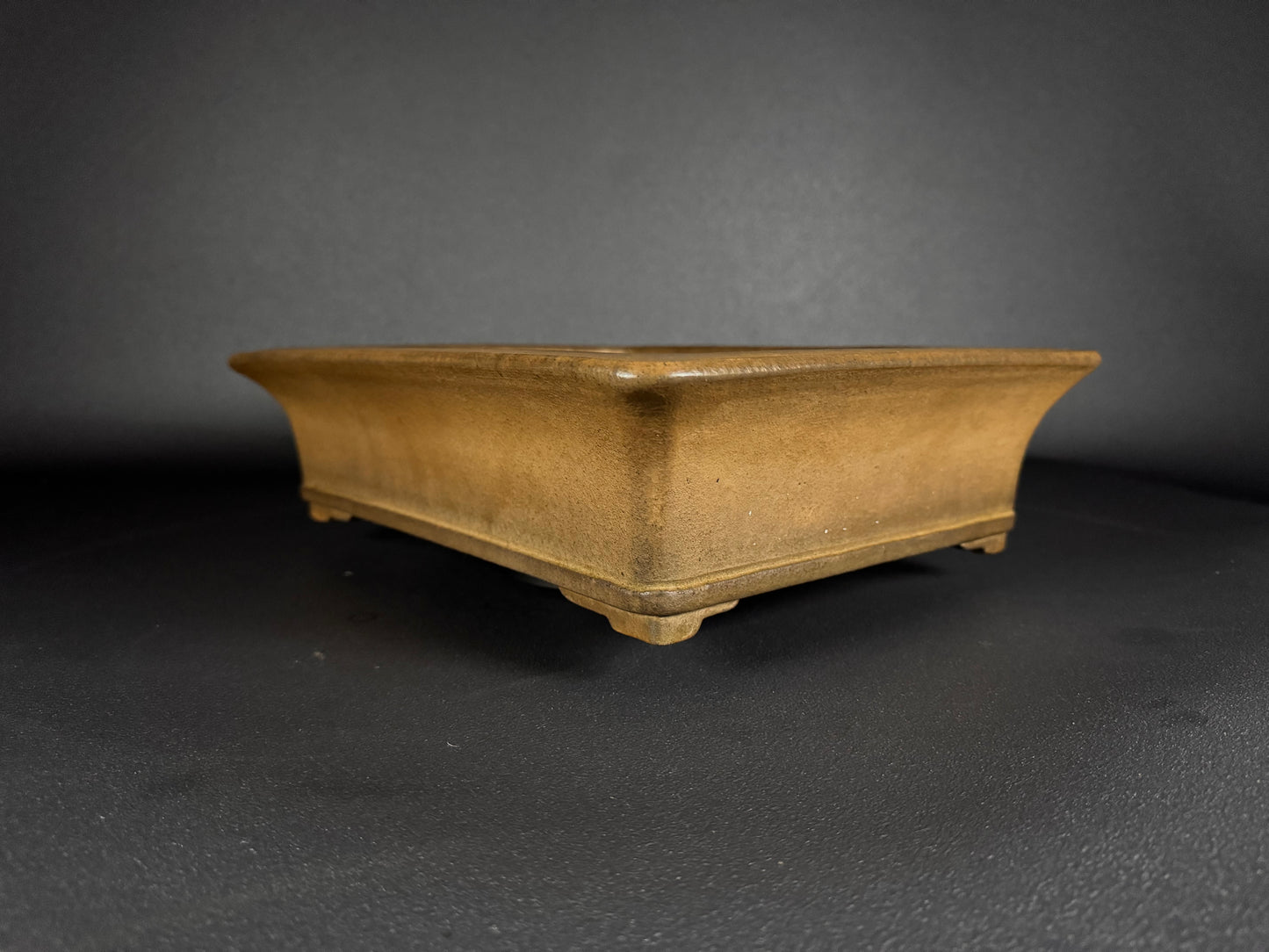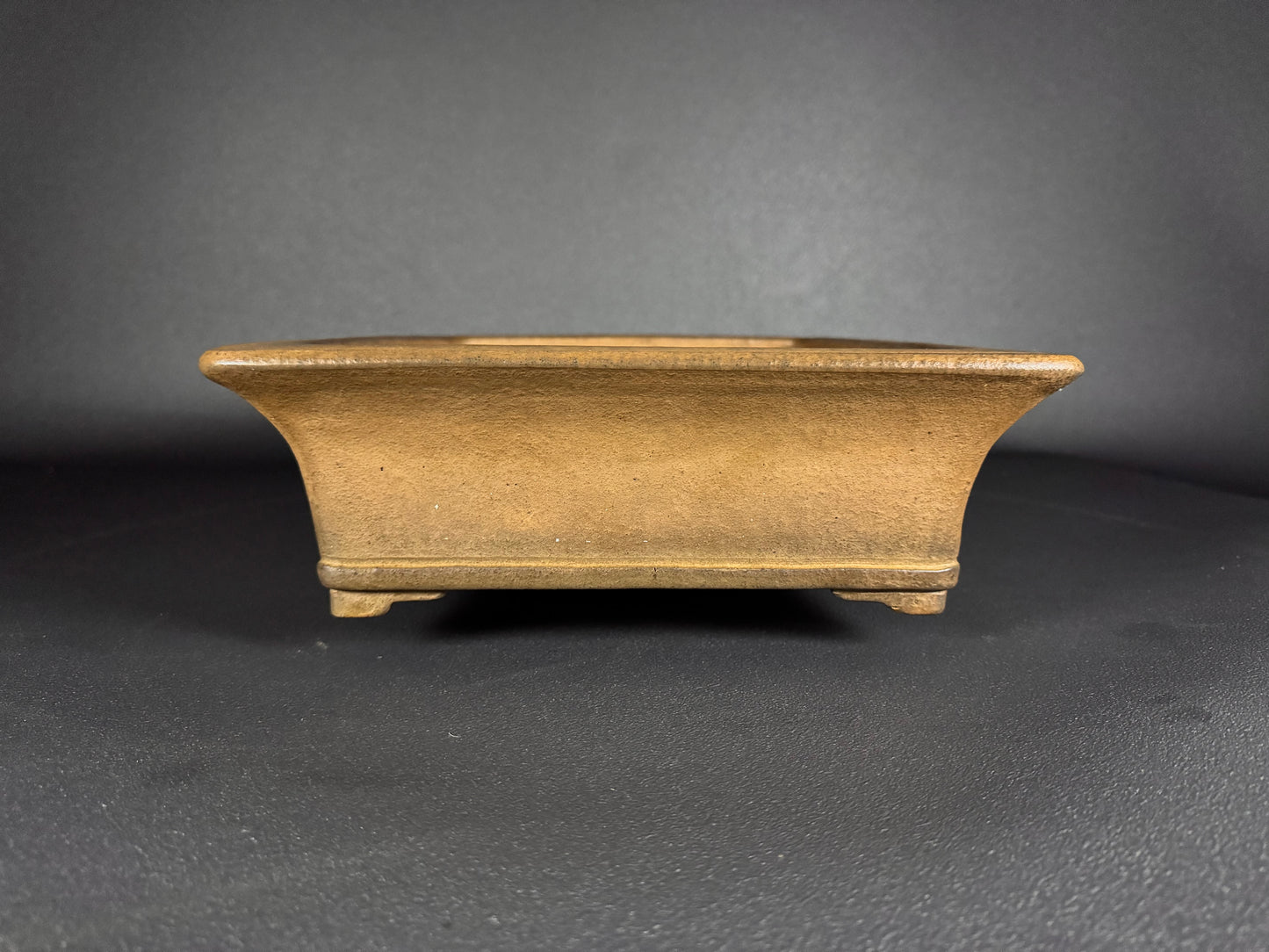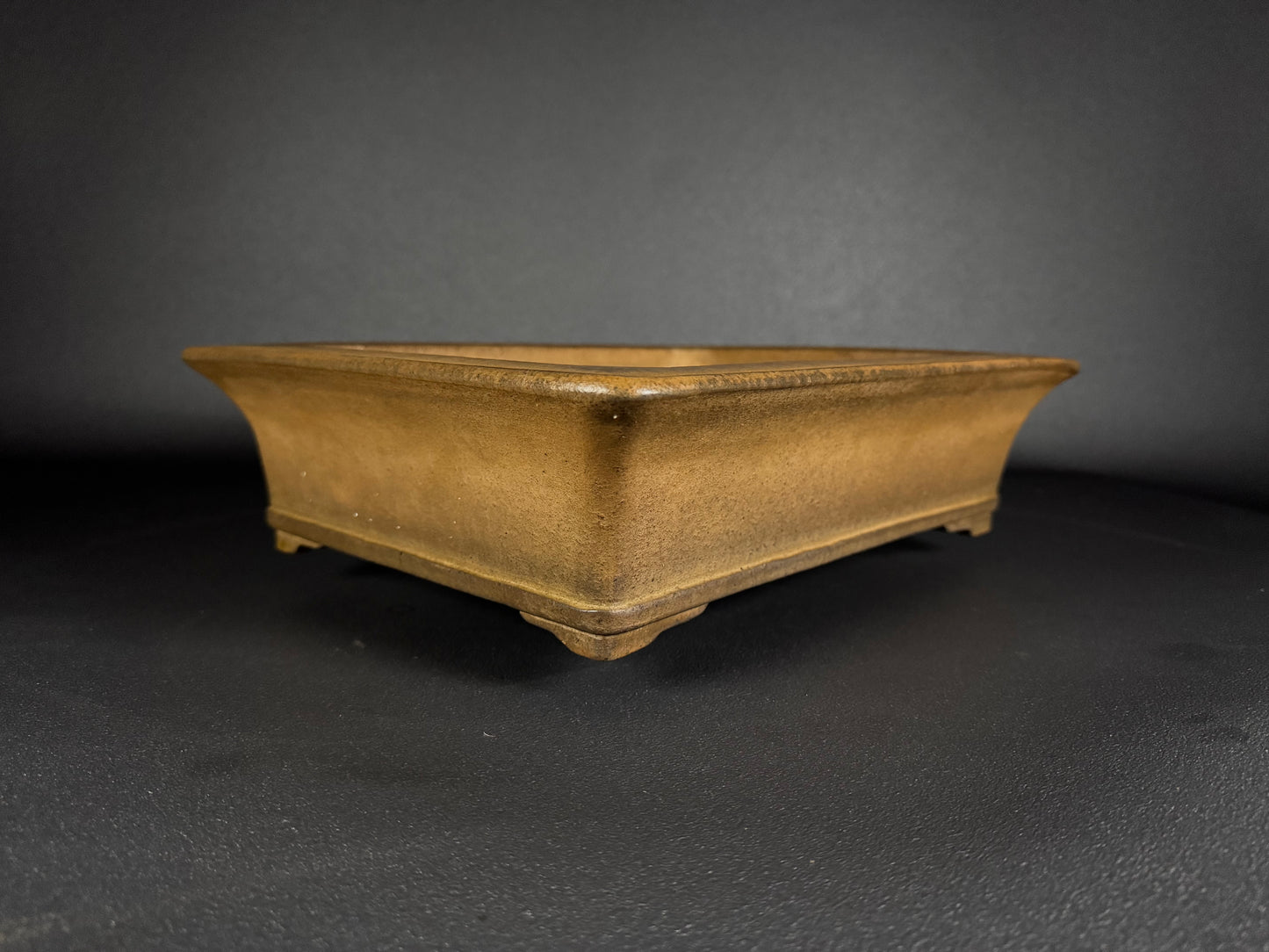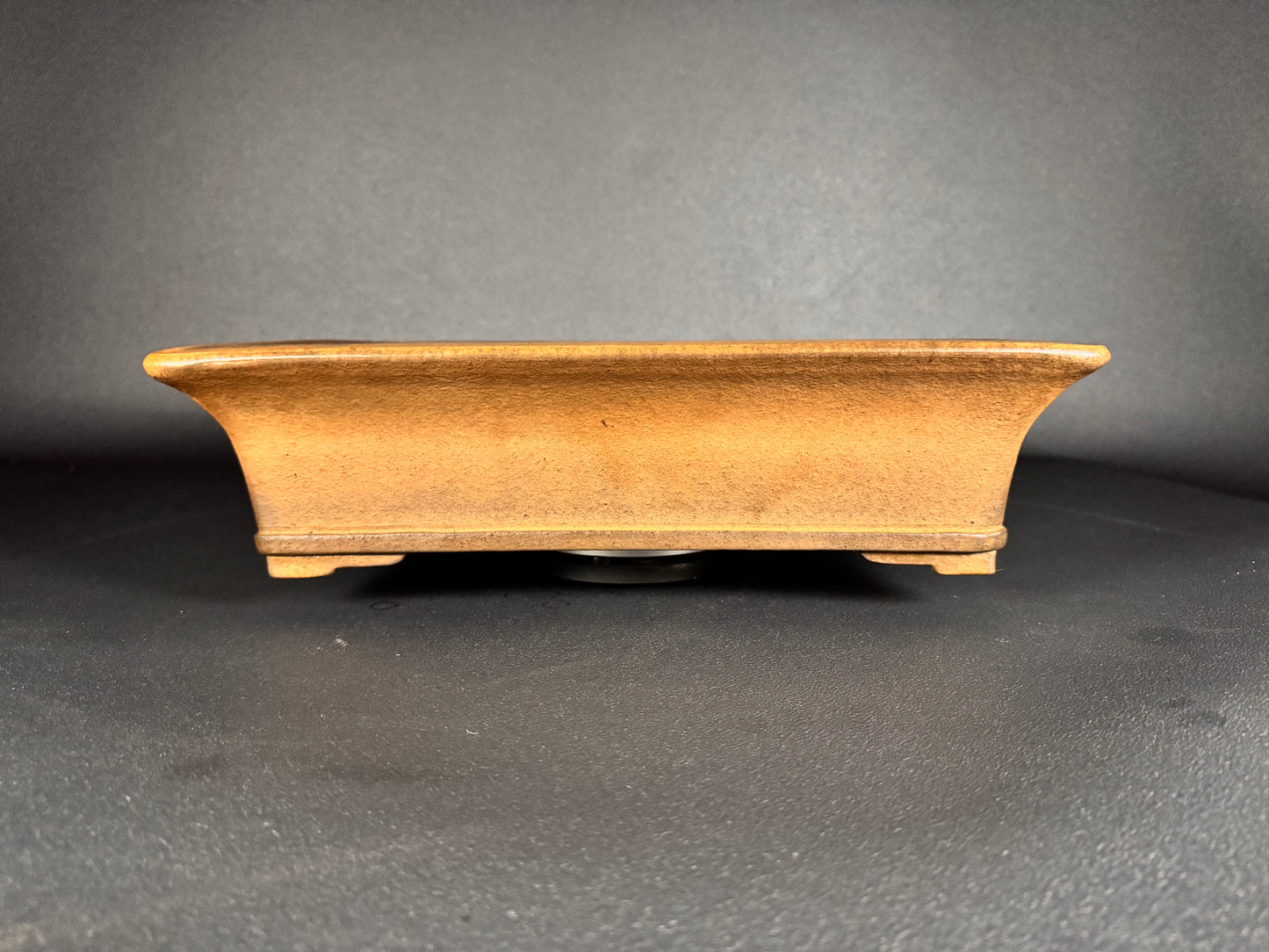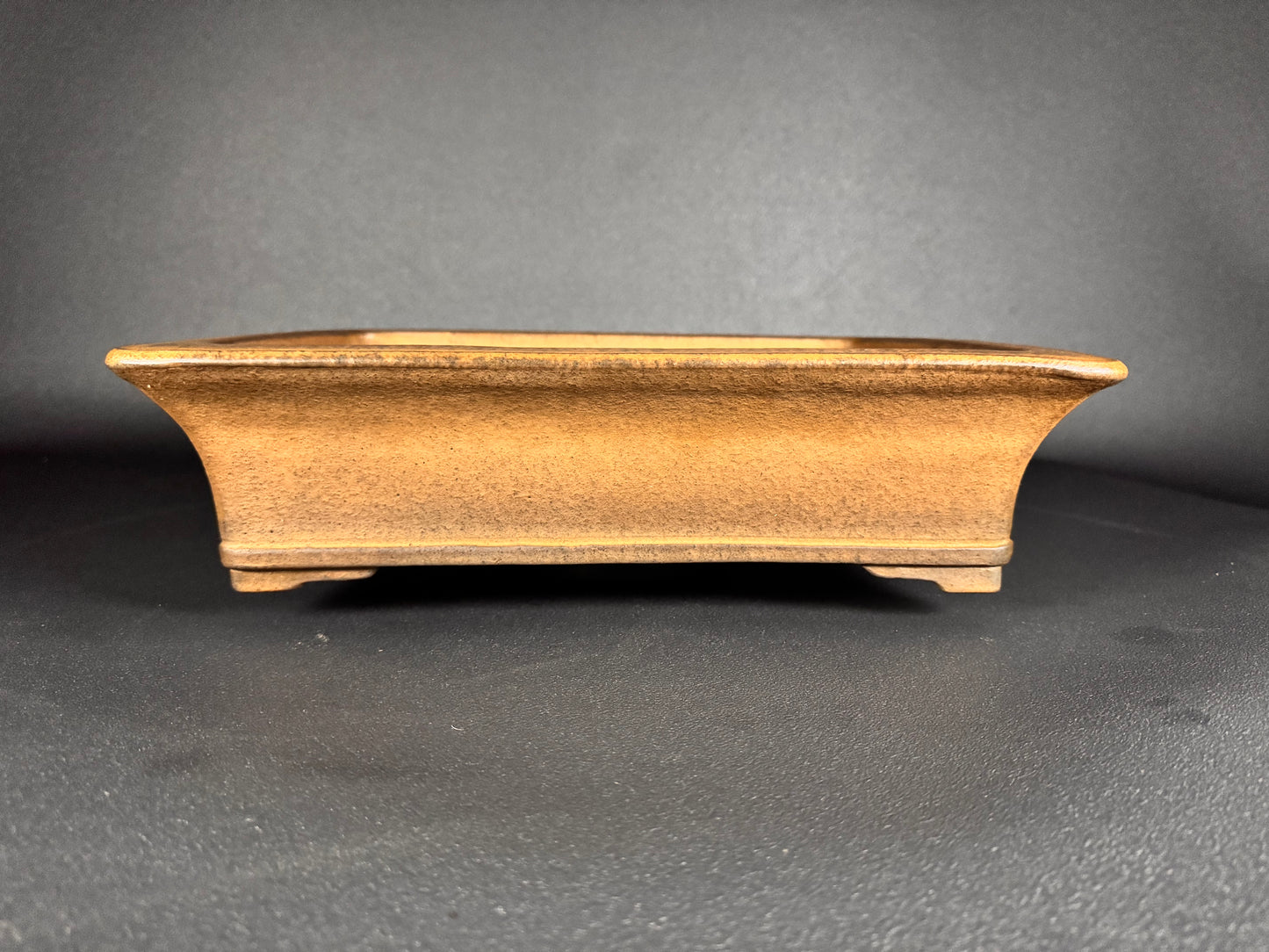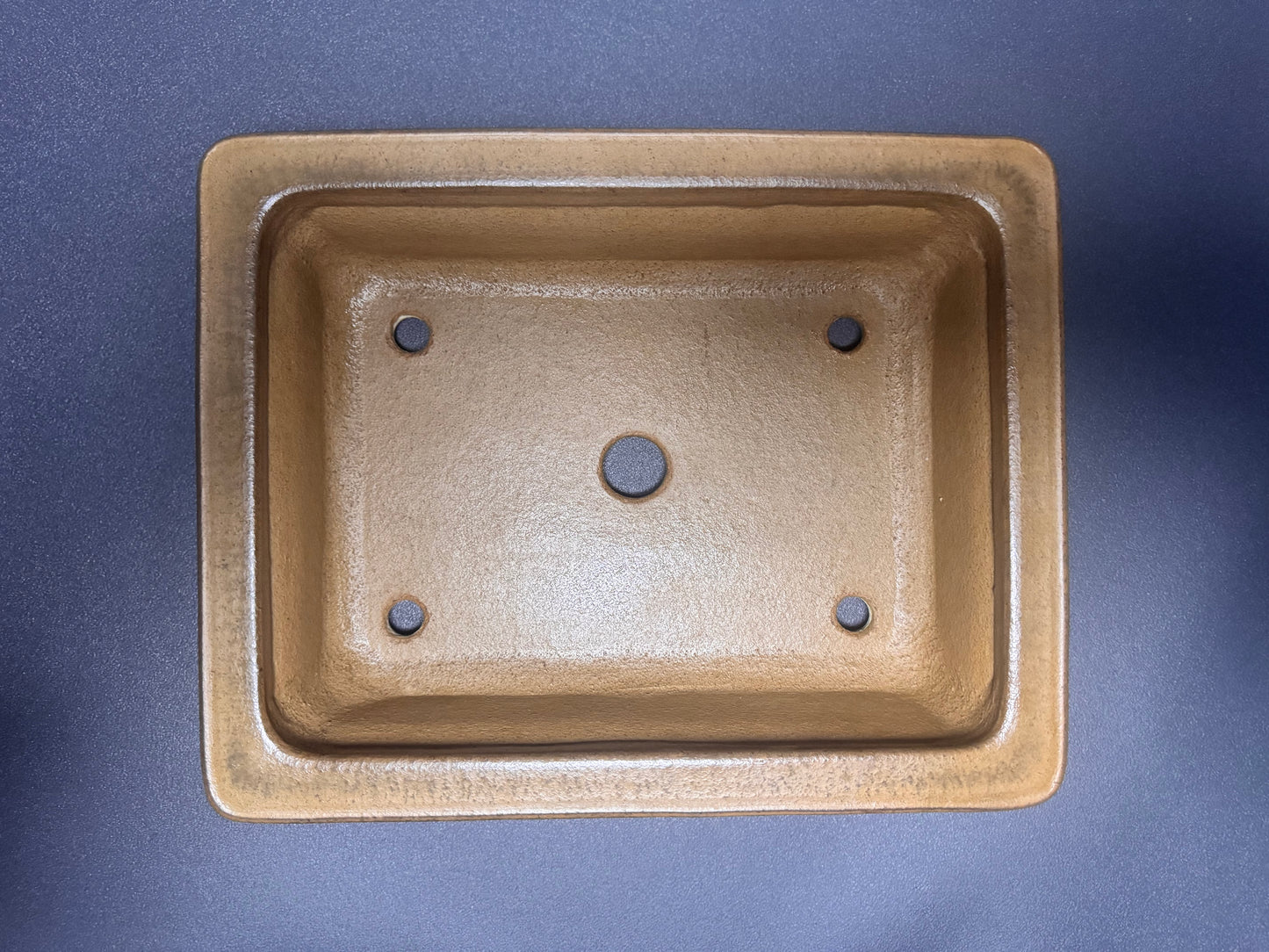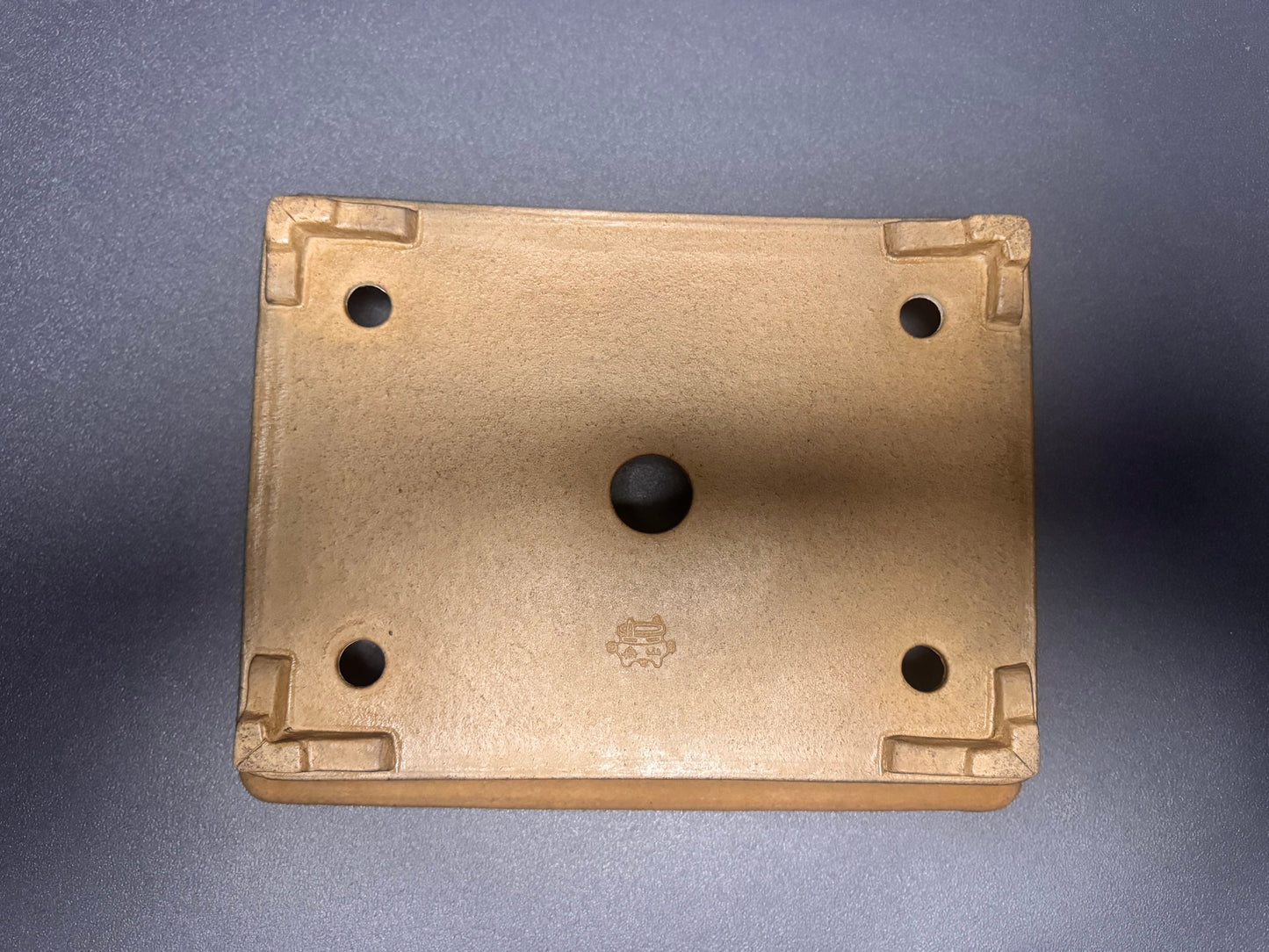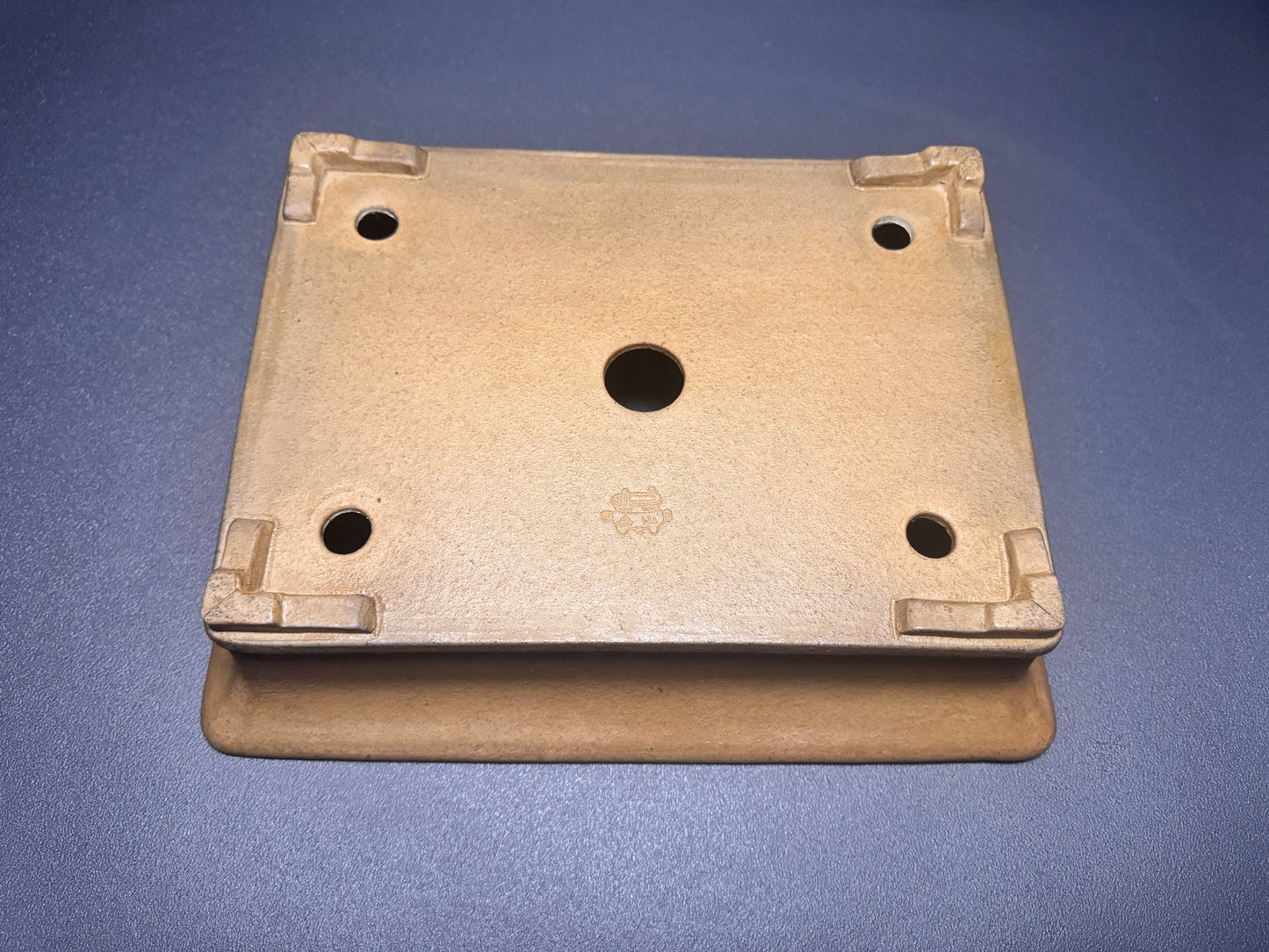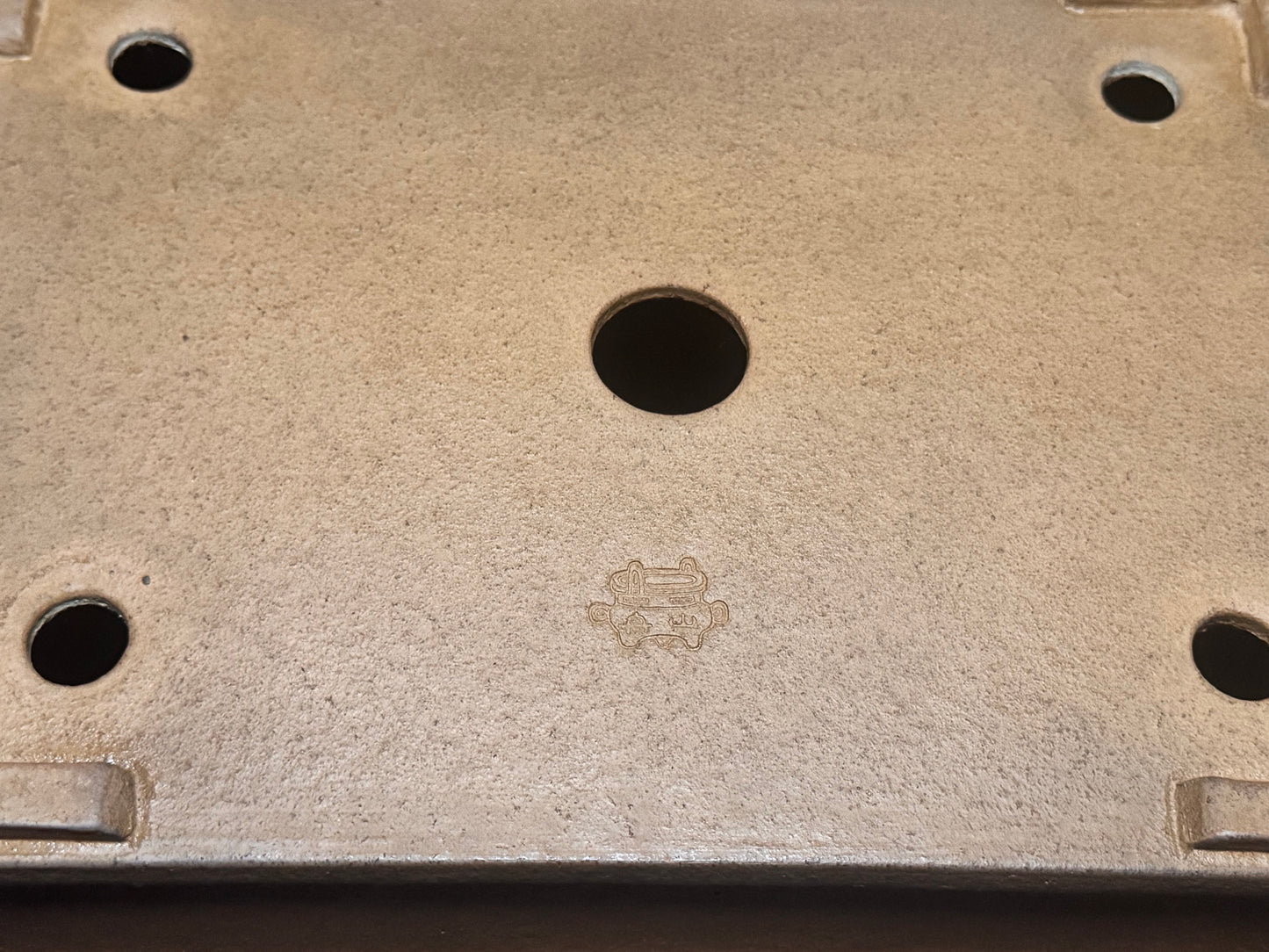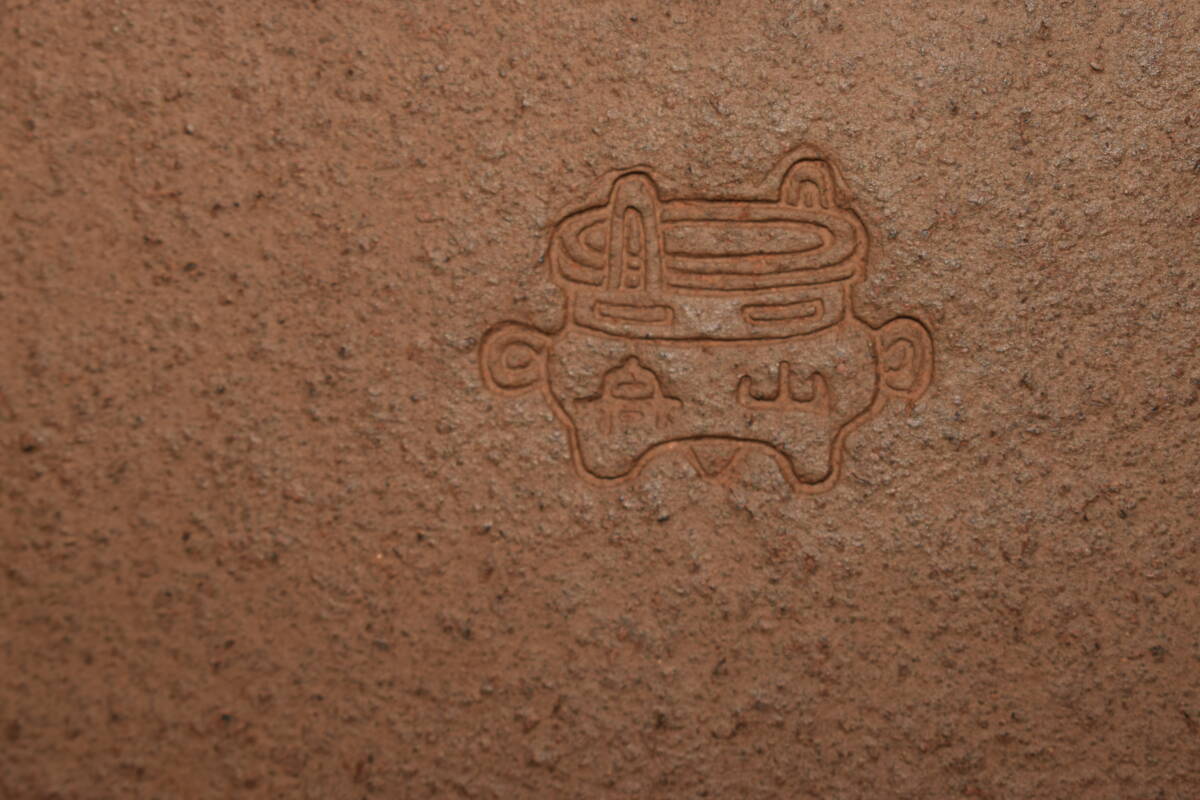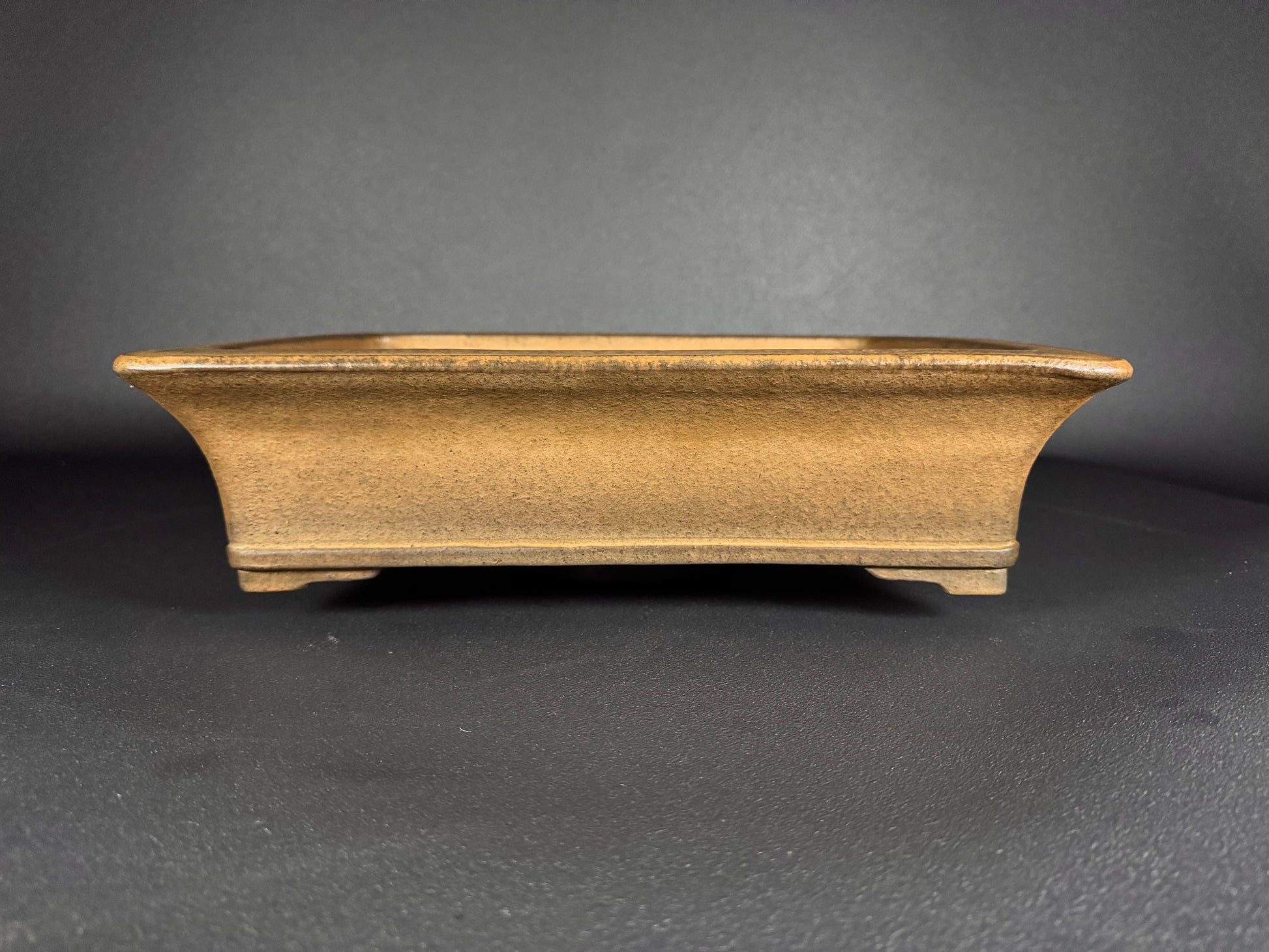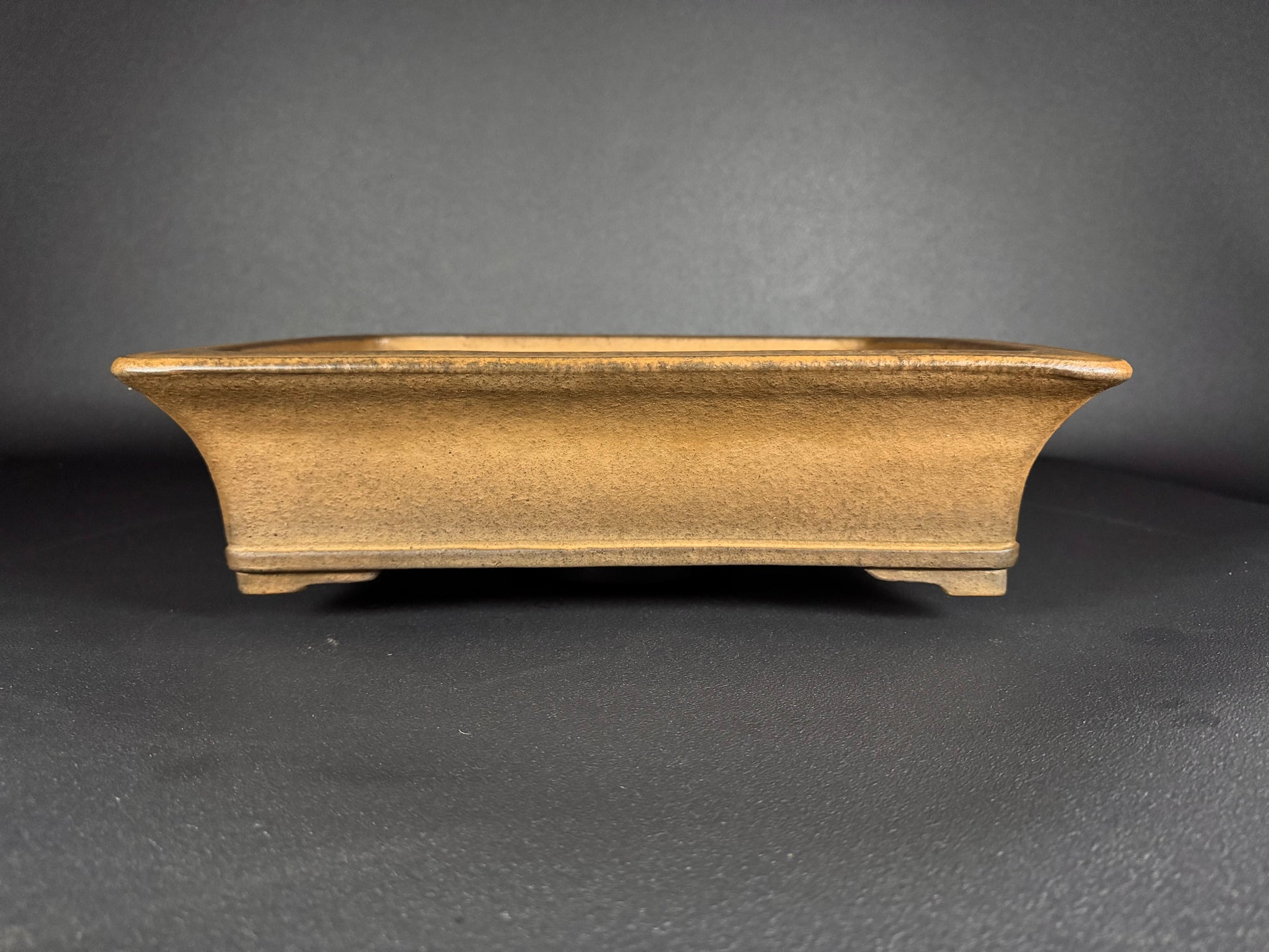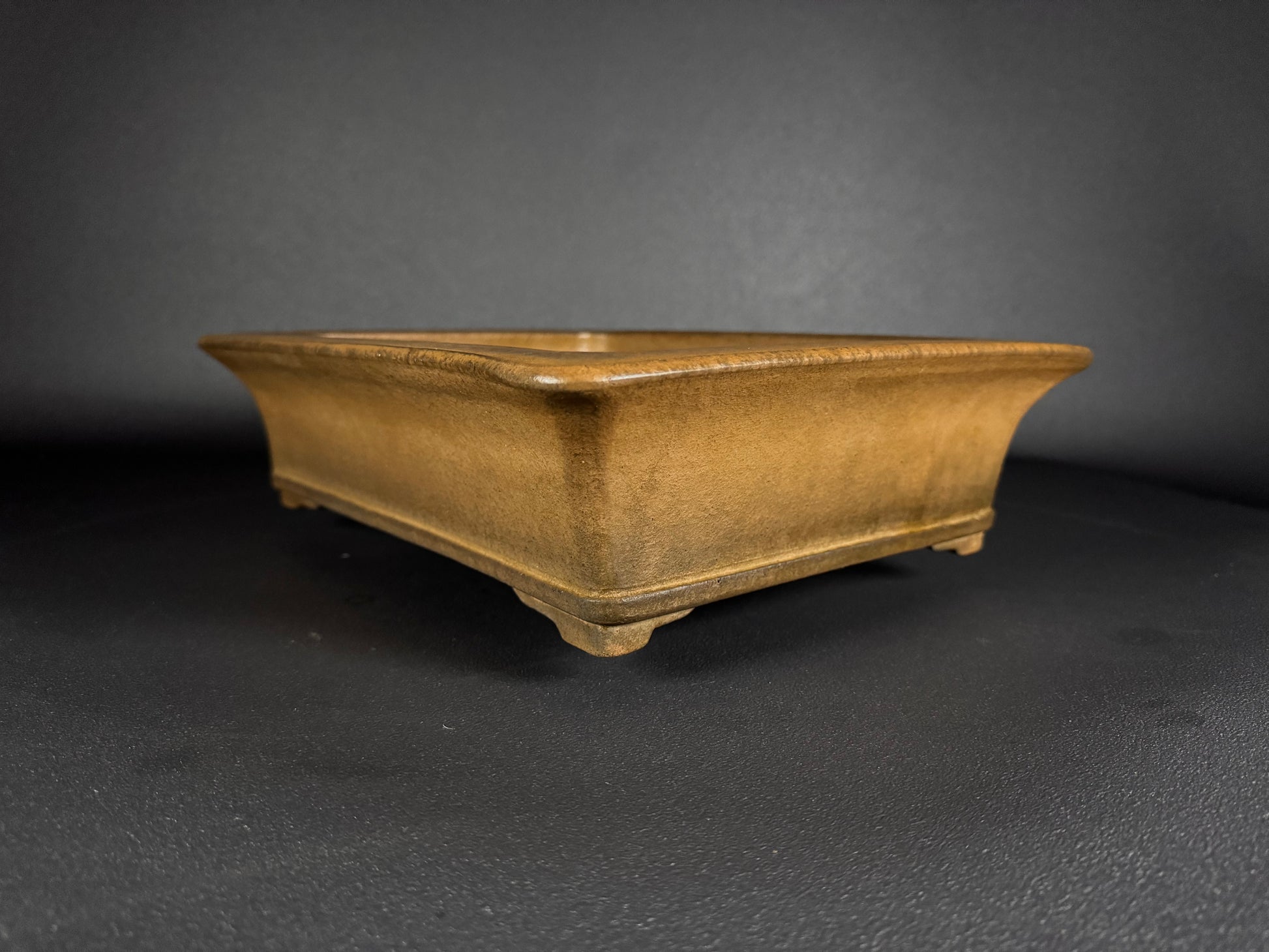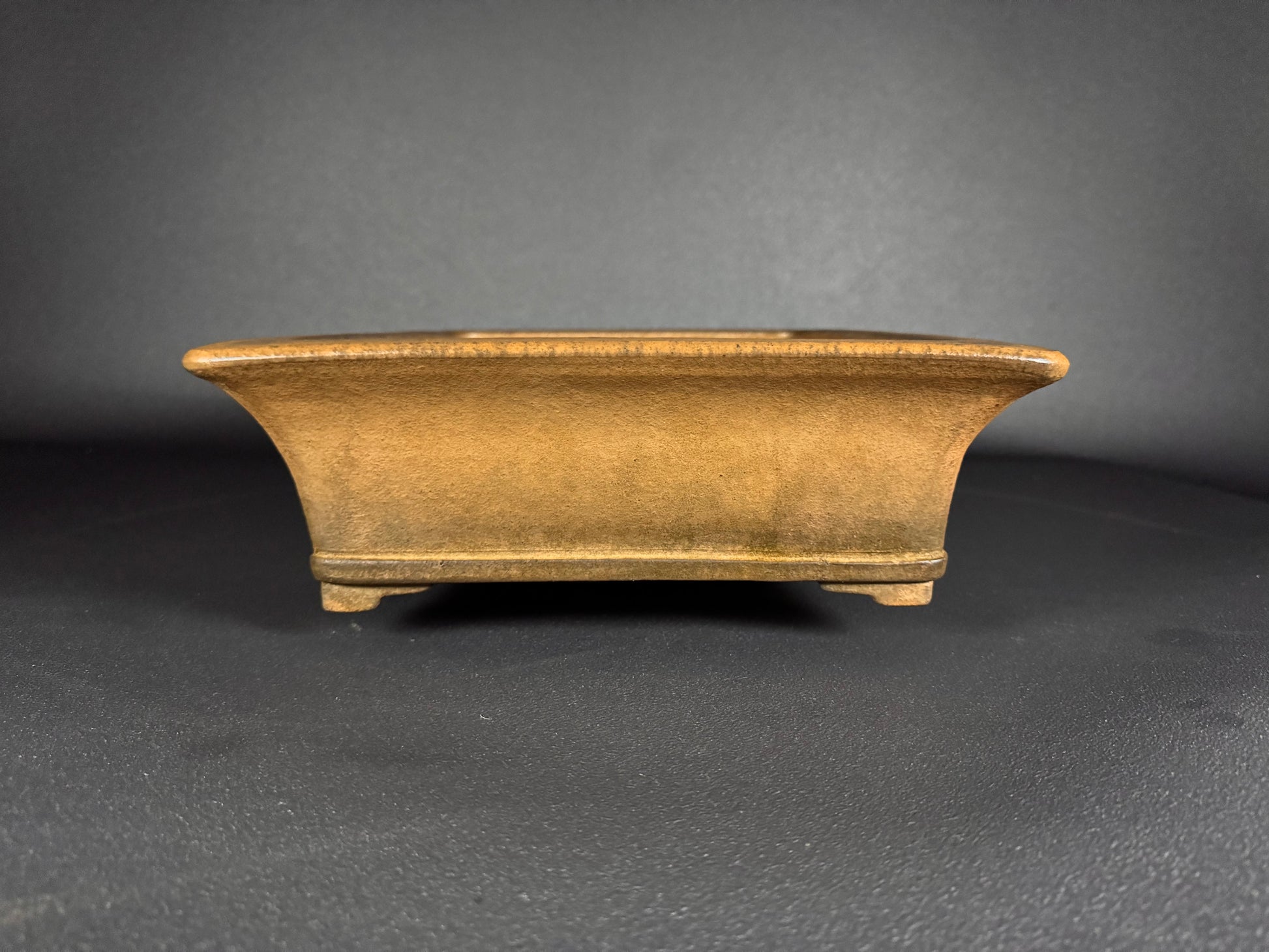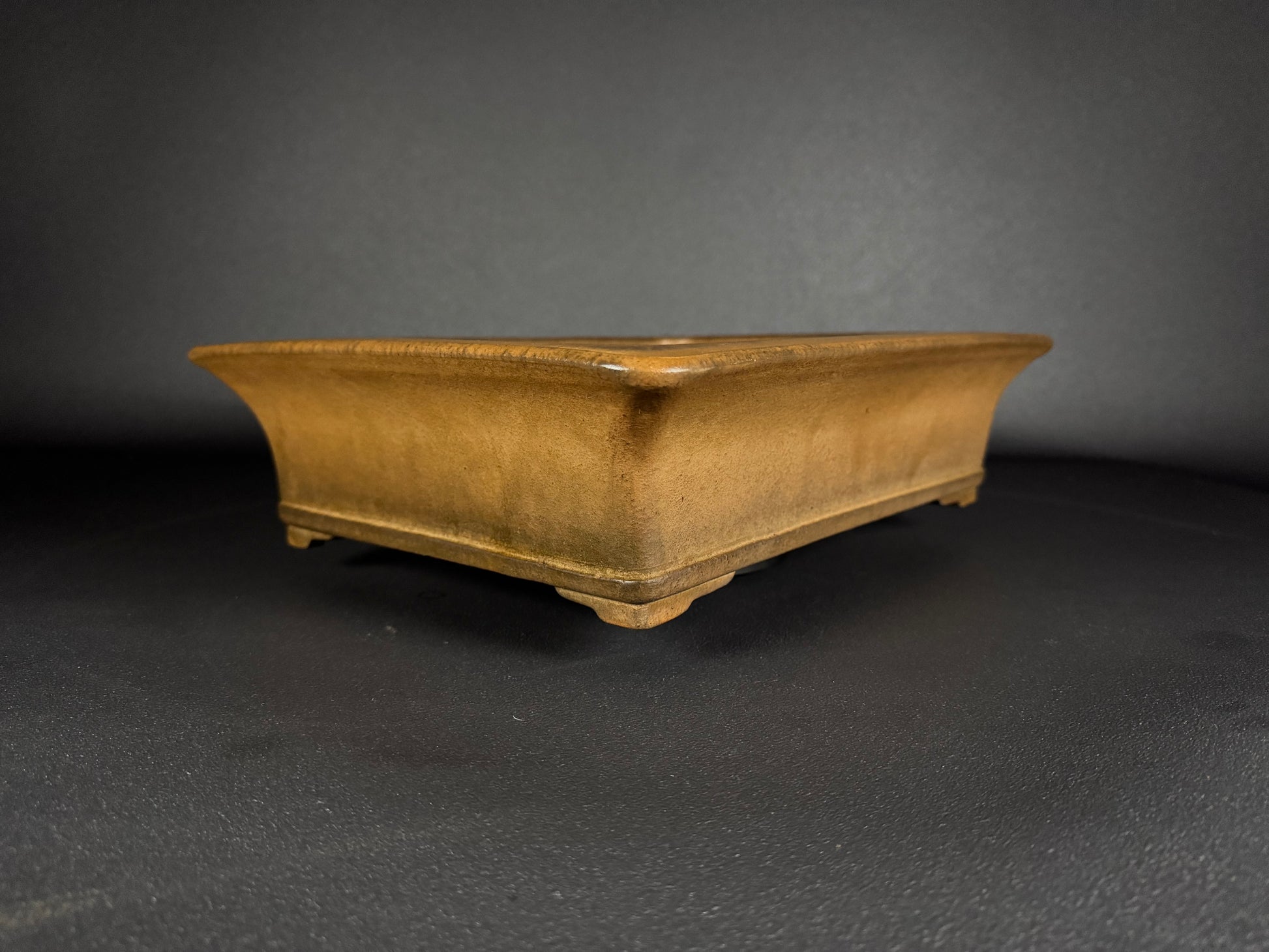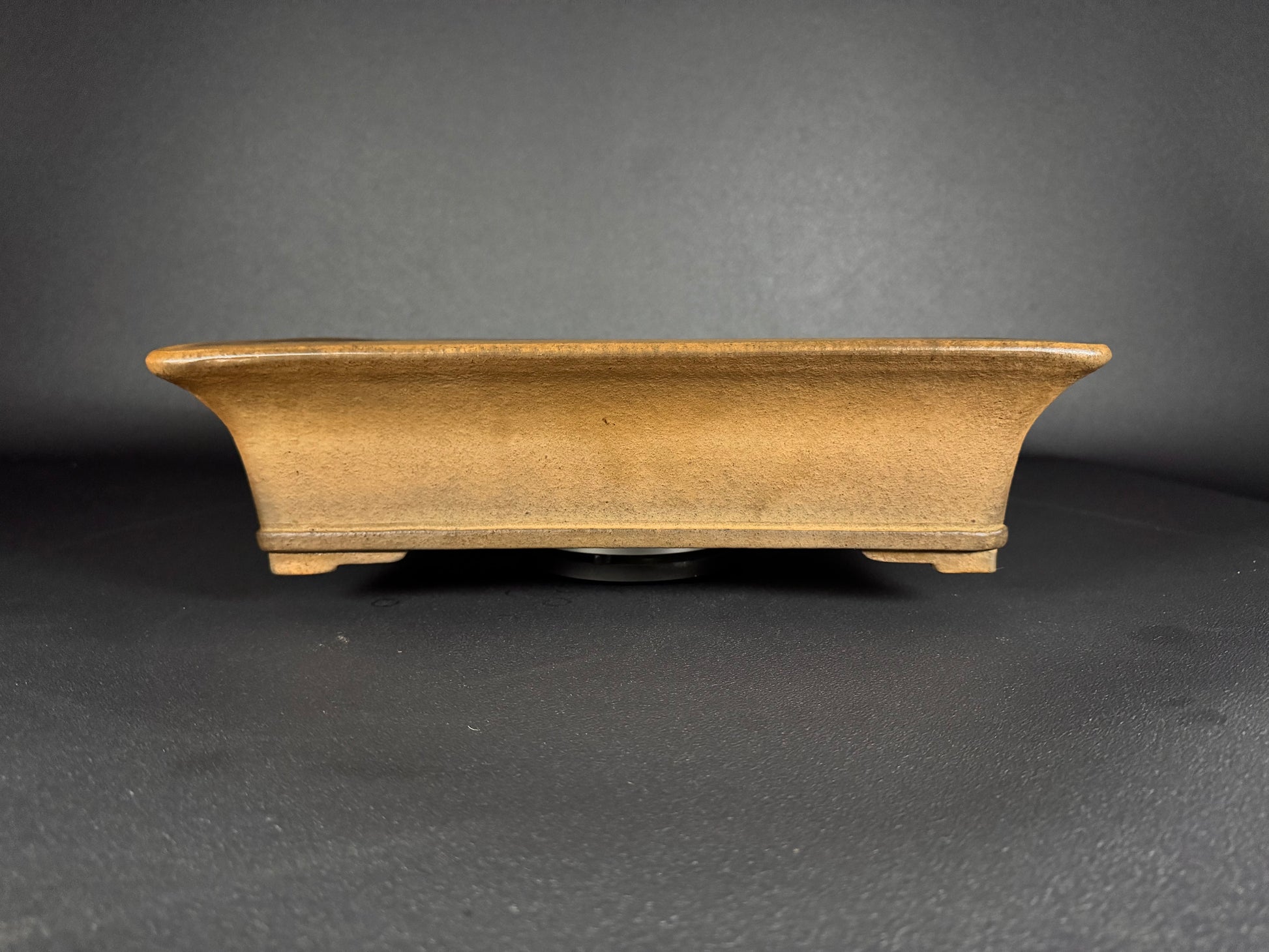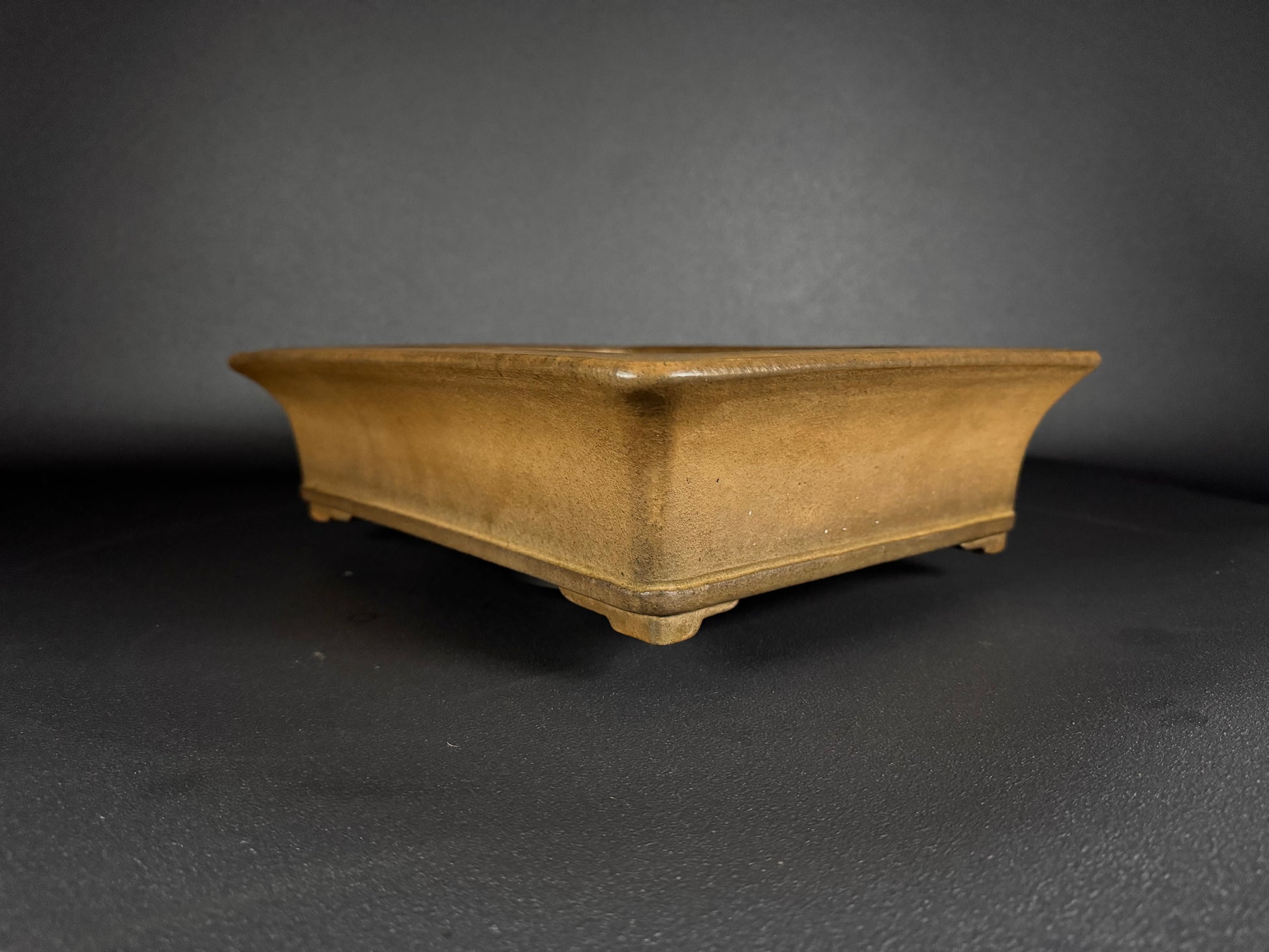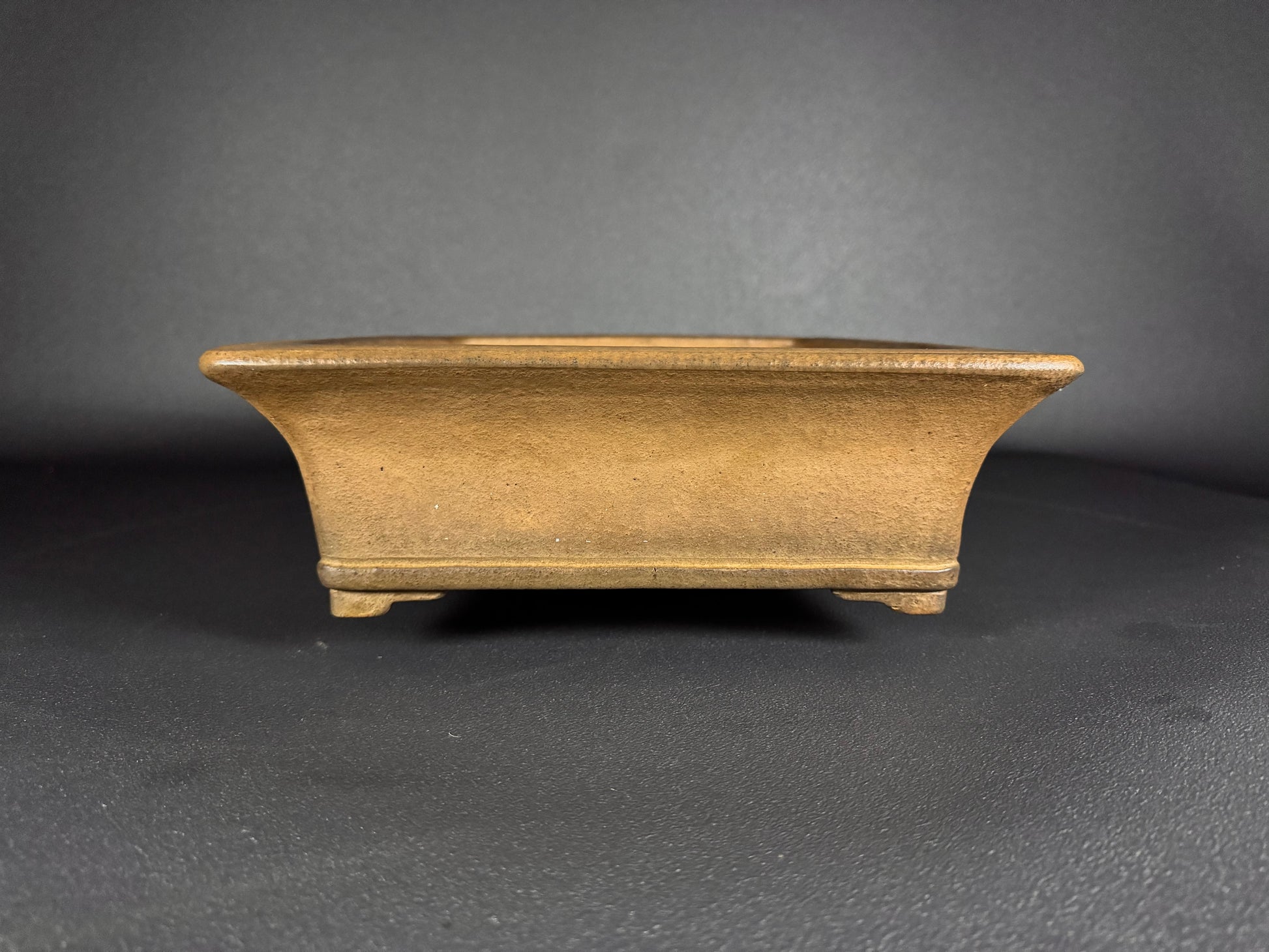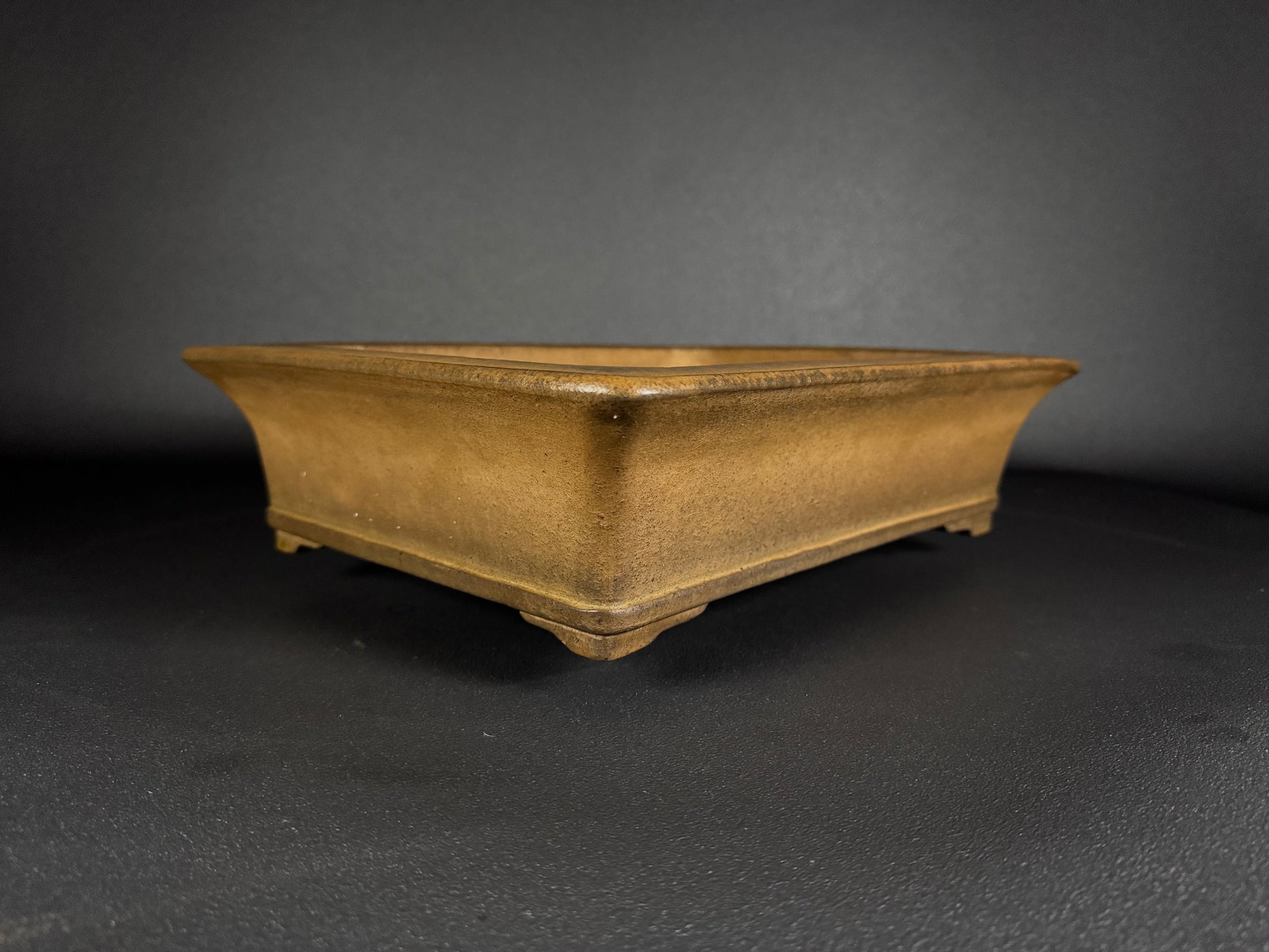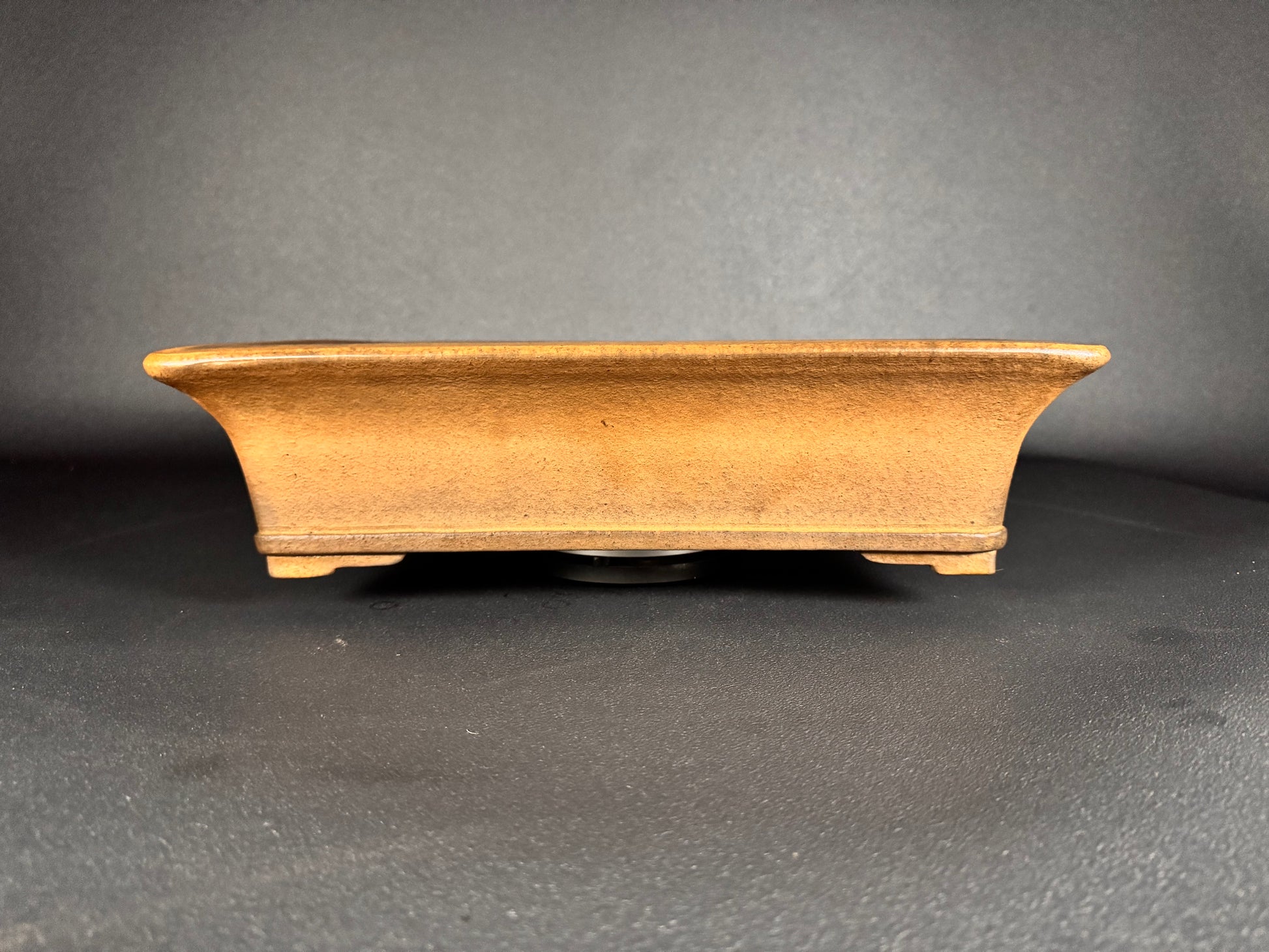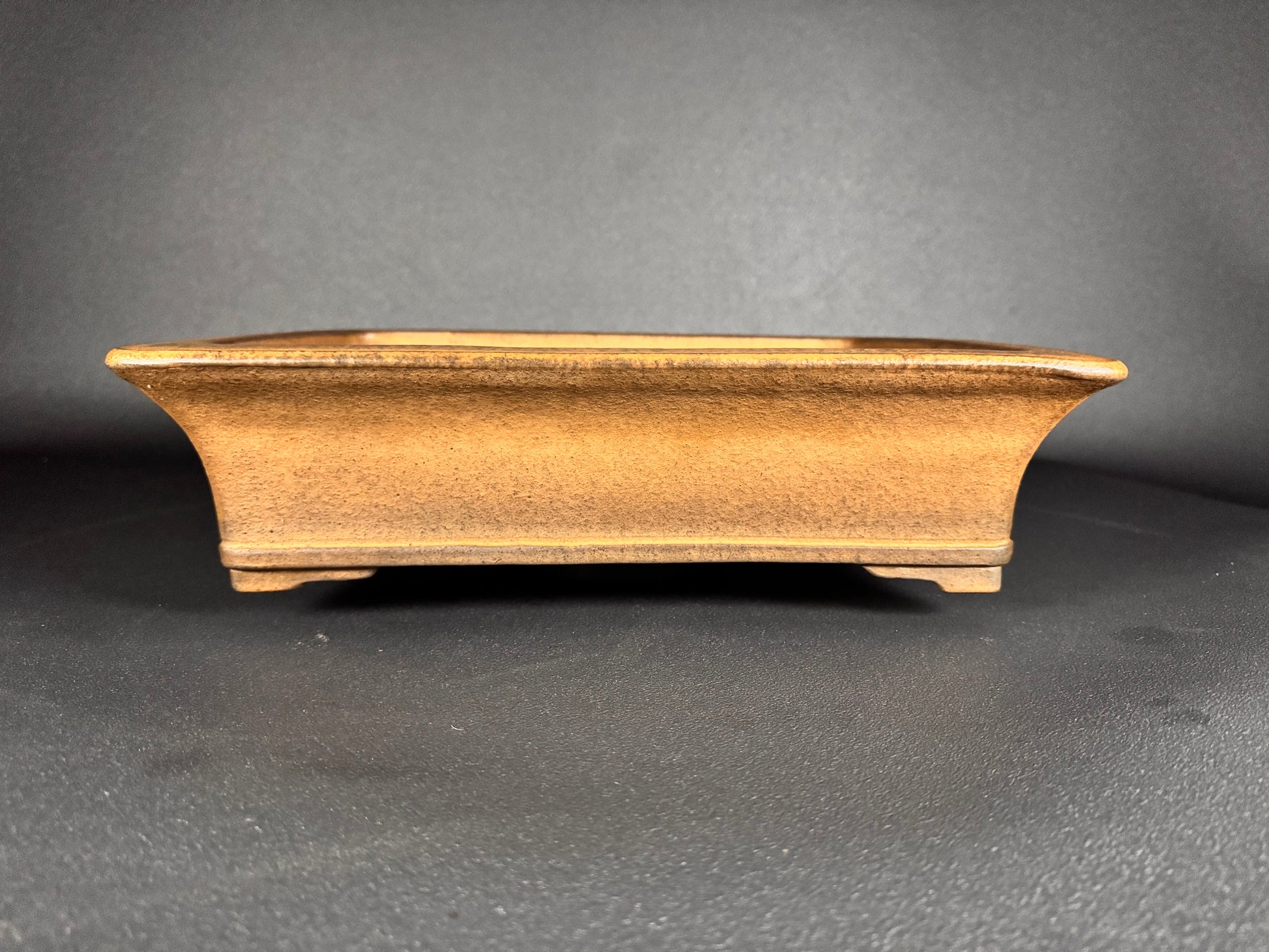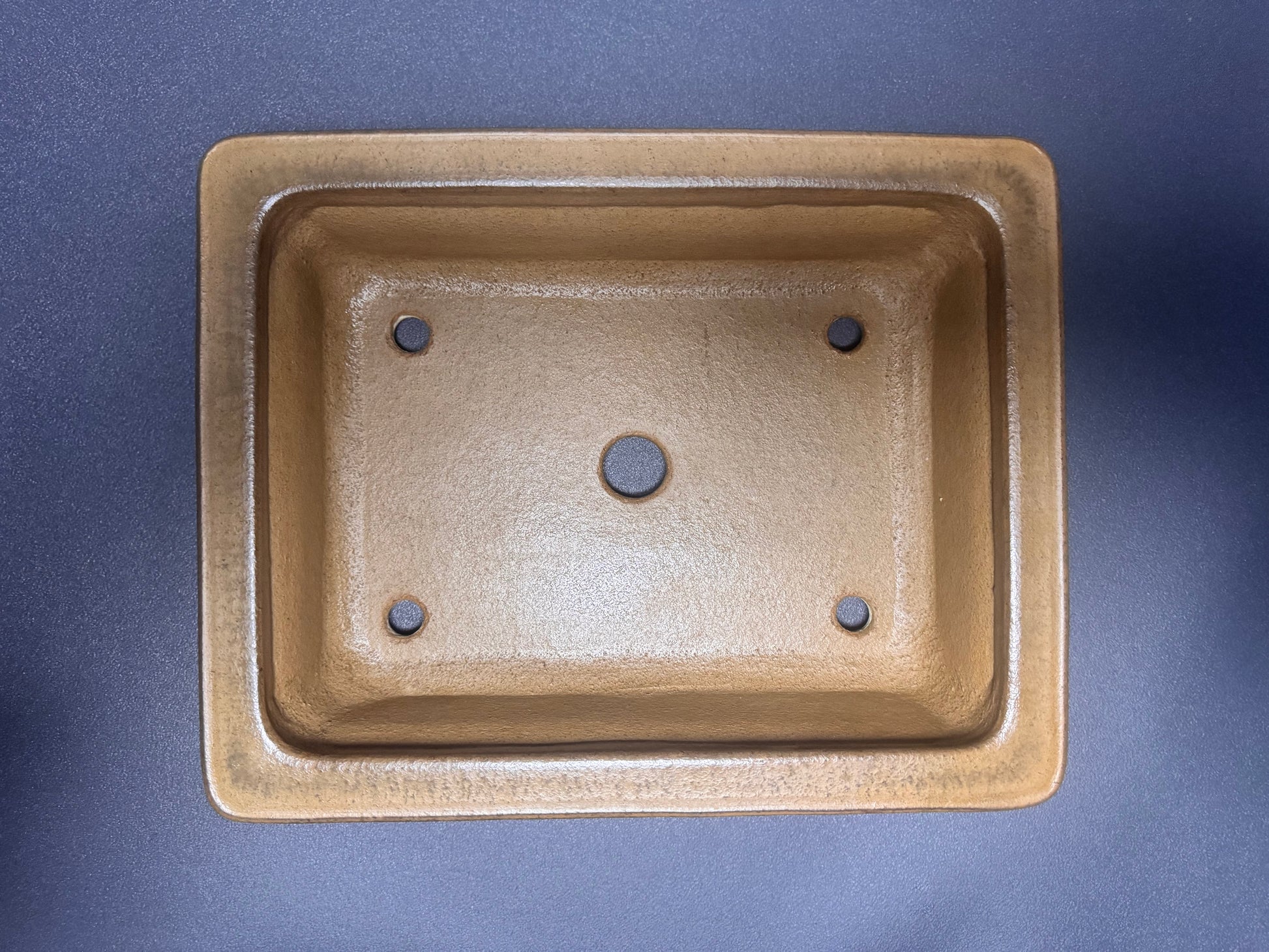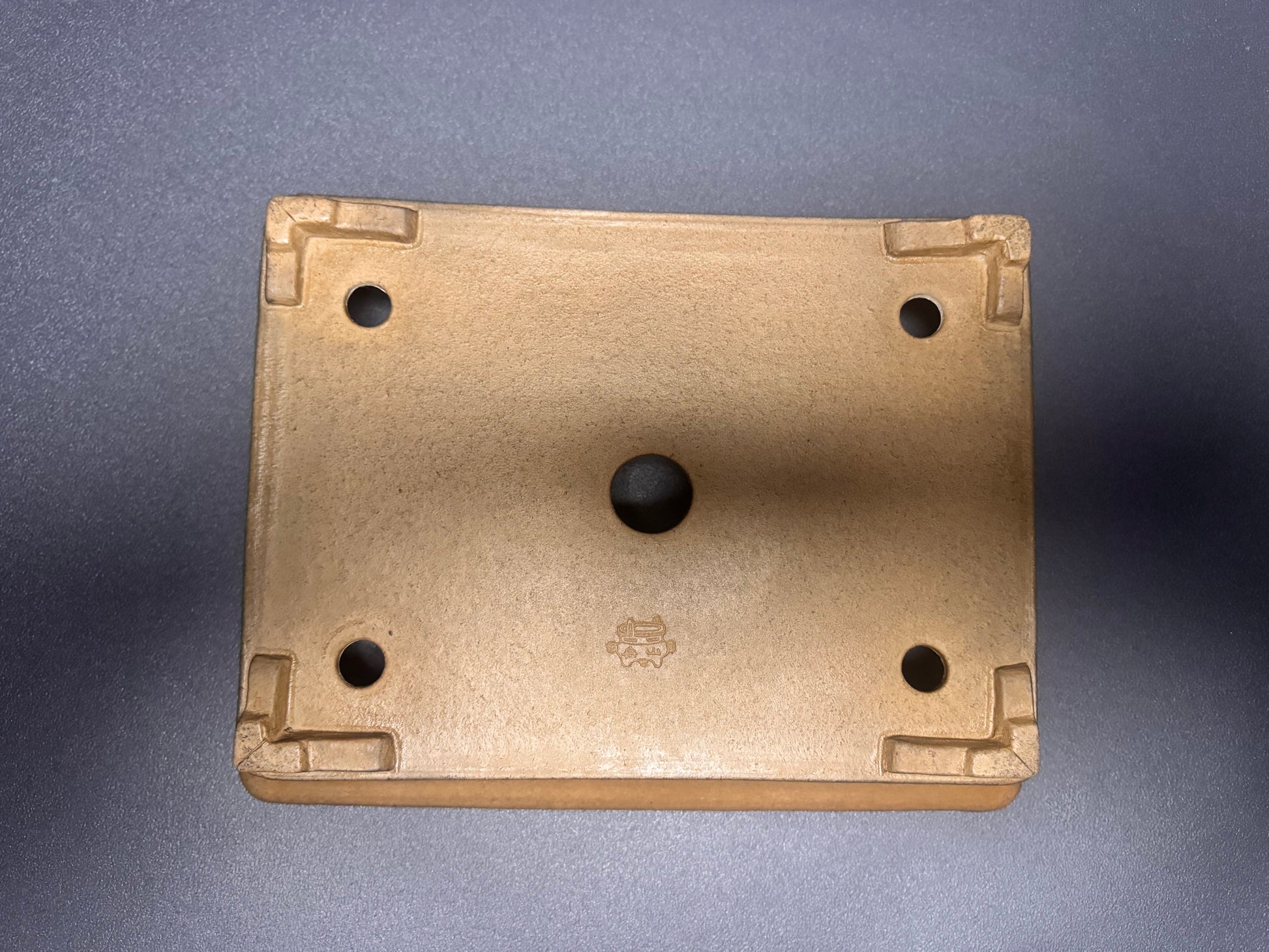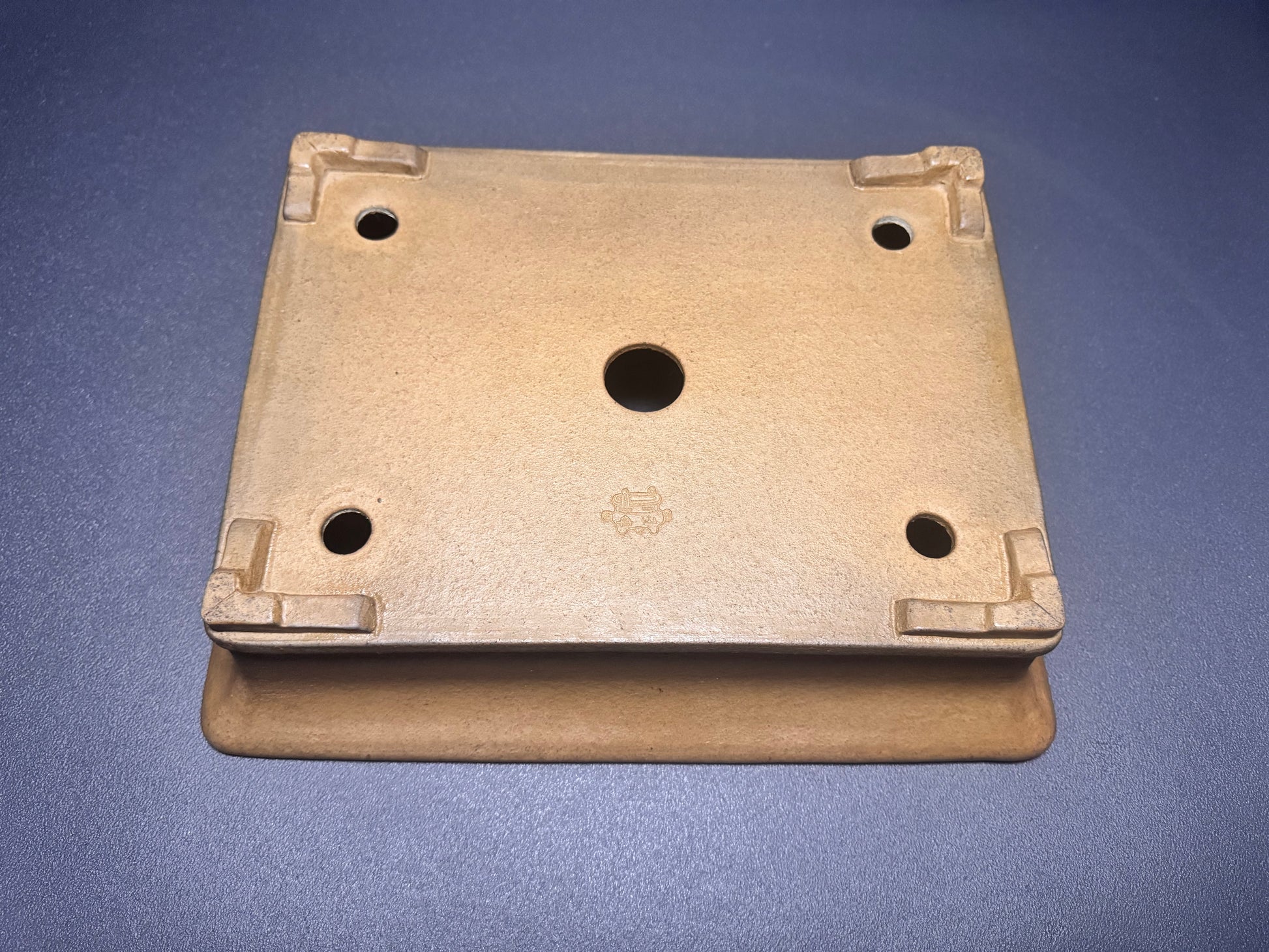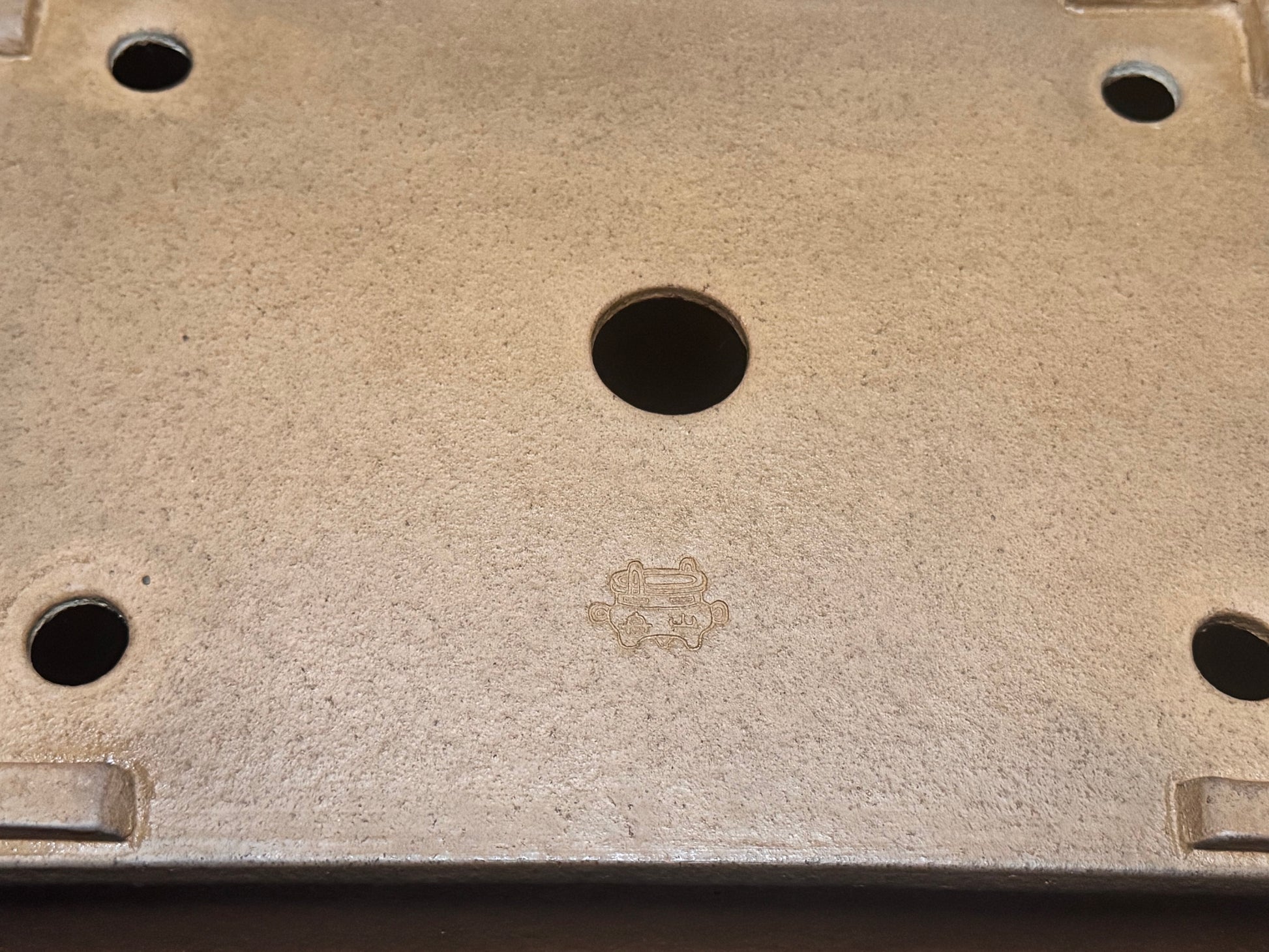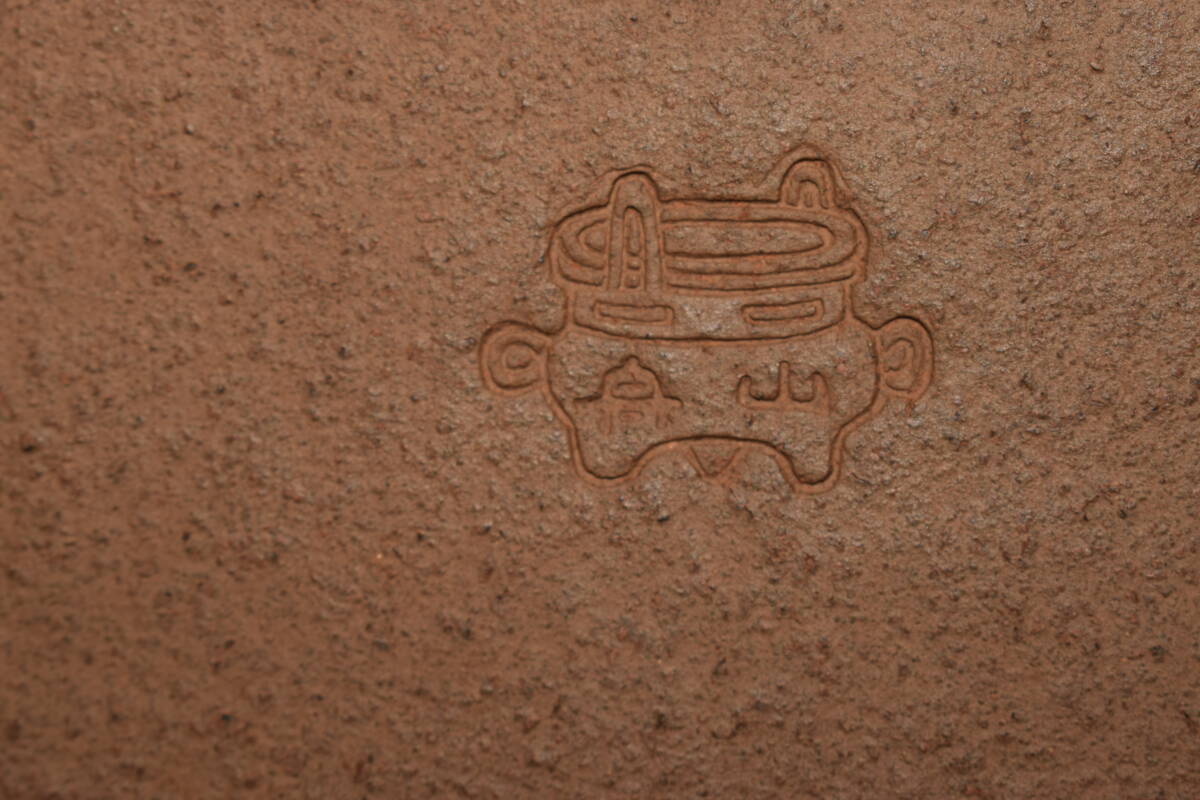Sugi Bonsai
SYU-ZAN Suzuki (舟山), (Suzuki Shinji (鈴木伸二)) Rectangular 37cm
SYU-ZAN Suzuki (舟山), (Suzuki Shinji (鈴木伸二)) Rectangular 37cm
Couldn't load pickup availability
SYU-ZAN Suzuki (舟山), (Suzuki Shinji (鈴木伸二)) Rectangular 37cm
SYU-ZAN, Rectangular 37cm
Product Details: Not for Sale, if interested ( Ask me! )
Region: Tokoname 常滑Aichi Prefecture
Kiln: Tokoname
Potter: Syu Zan (舟山), real name Suzuki Shinji (鈴木伸二)
This rectangular bonsai pot, crafted by renowned contemporary Japanese potter Syu-Zan (Suzuki Shinji), embodies the harmonious balance of form and function that defines high-end bonsai ceramics. The pot features a subtly flared rim and understated low feet, emphasising its clean, classical silhouette. The reddish clay surface is smooth but retains a slightly textured character, enhancing its natural aesthetic appeal. The pot’s proportions and overall craftsmanship make it ideal for medium-sized bonsai trees, offering both visual stability and a refined presentation.
The seal on the base is an incised design bearing the artist’s name “舟山” (Syu Zan), which also resembles a traditional kiln or ceremonial vessel — a nod to both the potter’s name and the historical roots of Japanese ceramic artistry.
External Dimensions: 37.0 x 29.3 x 9.7 cm
Condition: Excellent
Biography of Suzuki Shinji (Syu Zan, 舟山)
Name: Suzuki Shinji (鈴木伸二)
Art Name: Syu Zan (舟山)
Born: 1928, Tsu City, Mie Prefecture, Japan
Died: 1988
Professions: Banker (until 1971), Full-time Bonsai Potter (1971–1988)
Primary Workshop Location: Tōgō Ward, Aichi Prefecture, Japan
Specialization: Handmade bonsai pots; unglazed, blended-clay ceramics influenced by Chinese antique styles
Career
Suzuki Shinji, better known in the bonsai world by his artist name Syu Zan (舟山), was born in 1928 in Tsu City, located in Mie Prefecture, Japan. He initially pursued a career in banking, but in 1971, he made the pivotal decision to leave the profession and dedicate himself fully to the art of ceramics. He relocated to Tōgō Ward in Aichi Prefecture, just east of Nagoya, an area rich in pottery tradition and close to the historic Tokoname kilns.
Artistic Style and Technique
Syu Zan’s ceramics are distinguished by a deep reverence for 18th and 19th century Chinese bonsai pottery, particularly from the Yixing tradition. His work reflects a deliberate emulation of those antique forms, textures, and aesthetics—interpreted through his own Japanese sensibilities.
To achieve a high degree of authenticity, he went as far as importing clay from China, which he carefully blended with Japanese clay to develop a unique body material with a signature texture and tonal depth. His pots are entirely handmade, often showcasing moderate to rough surfaces, classical silhouettes, and elegant proportions.
These tactile qualities are not merely decorative—they reflect his understanding of the philosophical and visual harmony between bonsai and its container. Syu Zan saw the pot not just as a vessel, but as a coequal partner in the aesthetic presentation of the tree, a perspective rooted in both Japanese wabi-sabi and Chinese literati ideals.
Reputation and Legacy
Syu Zan quickly rose to prominence among bonsai professionals and collectors during his relatively short career. His work was frequently featured in Kokufu-ten, Japan’s most prestigious national bonsai exhibition—a distinction rarely granted to ceramic artists, and only to those whose work achieves the highest standard of excellence and compatibility with world-class bonsai trees.
He is now considered one of the most respected and collectible bonsai potters of his generation. His pieces continue to be sought after not only for their artistic merit but also for their historical significance within the evolving canon of Japanese bonsai ceramics.
Syu Zan's legacy also lives on through his apprentice, Sen Syu (仙舟), who has carried forward his mentor’s stylistic vision while incorporating his own innovations. Sen Syu’s work is often seen as a natural continuation of Syu Zan’s artistic lineage, further cementing the master’s influence on subsequent generations.
Share
